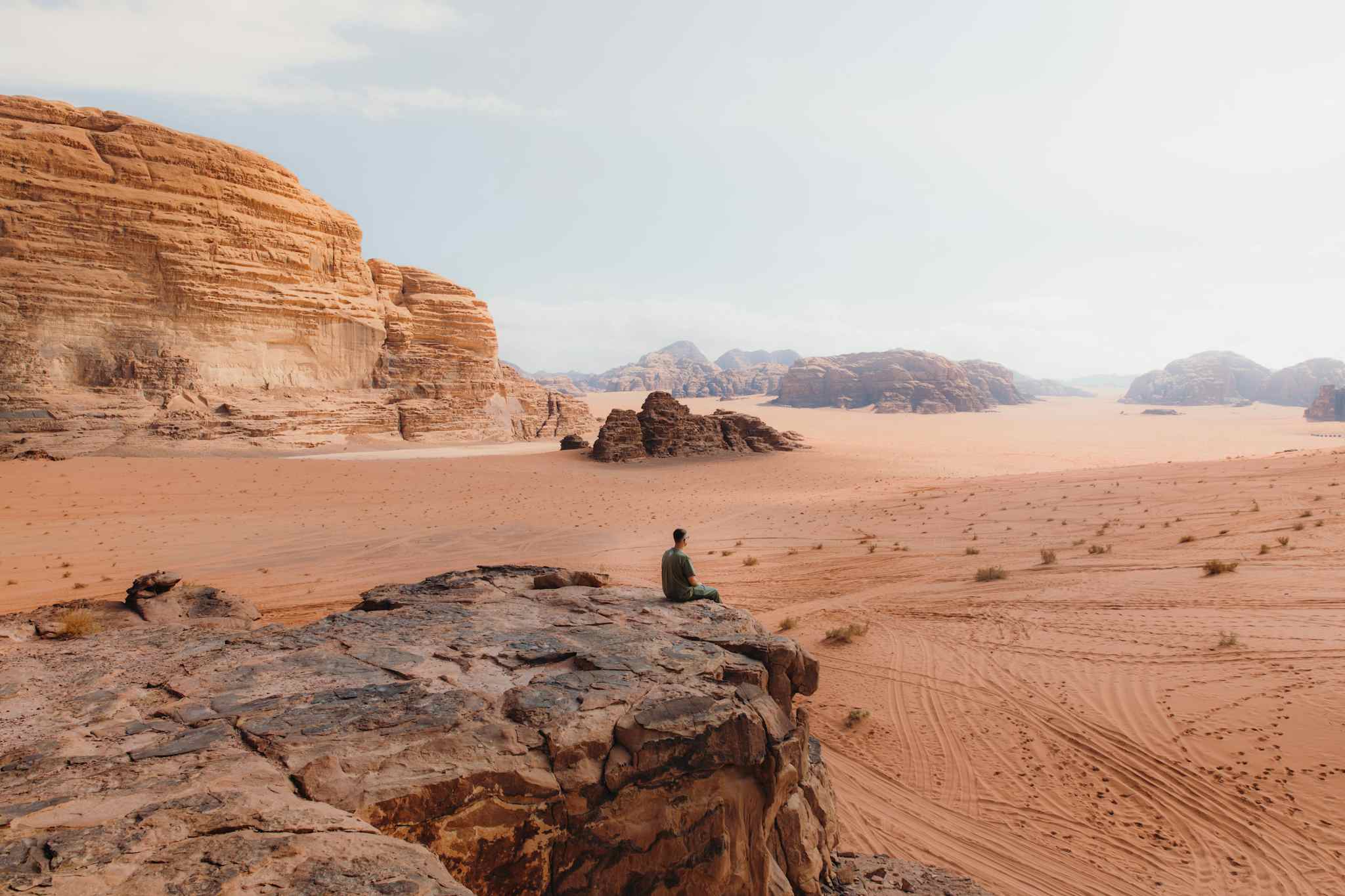We think that April is one of the best months to travel, thanks to the variety it offers. In most of Europe it signals the arrival of spring. Head south towards the Mediterranean and you’ll experience warm weather without the summer crowds - this is a particularly good time to visit Italy, the Balearics or the Canary Islands. But you can also catch snow if you head to Europe’s cooler northern reaches, such as Svalbard or Iceland.
Meanwhile, most of Asia is in the dry season, making it a popular time of year to visit. Should the summer temperatures here prove too much, you’ll find cooler climes by heading up into the Himalayas, where the trekking season is in full swing. April also tends to be the dry season in Africa, and a particularly good time to visit north African countries such as Tunisia and Morocco, before the searing summer desert makes hiking more challenging.
April is the last month of dry weather in many South American and Central American countries. Towards the end of the month you’ll experience some showers, but they’ll refresh you after a sweaty day’s hiking in the rainforest. This is also the end of peak season, so you’ll experience fewer crowds than if you travelled during the Christmas break.
We’ve compiled a list of 20 adventurous places to explore in April, from the Sahara Desert of Tunisia to the rainforests of Costa Rica, and everything in between.
1. The Sahara Desert, Tunisia
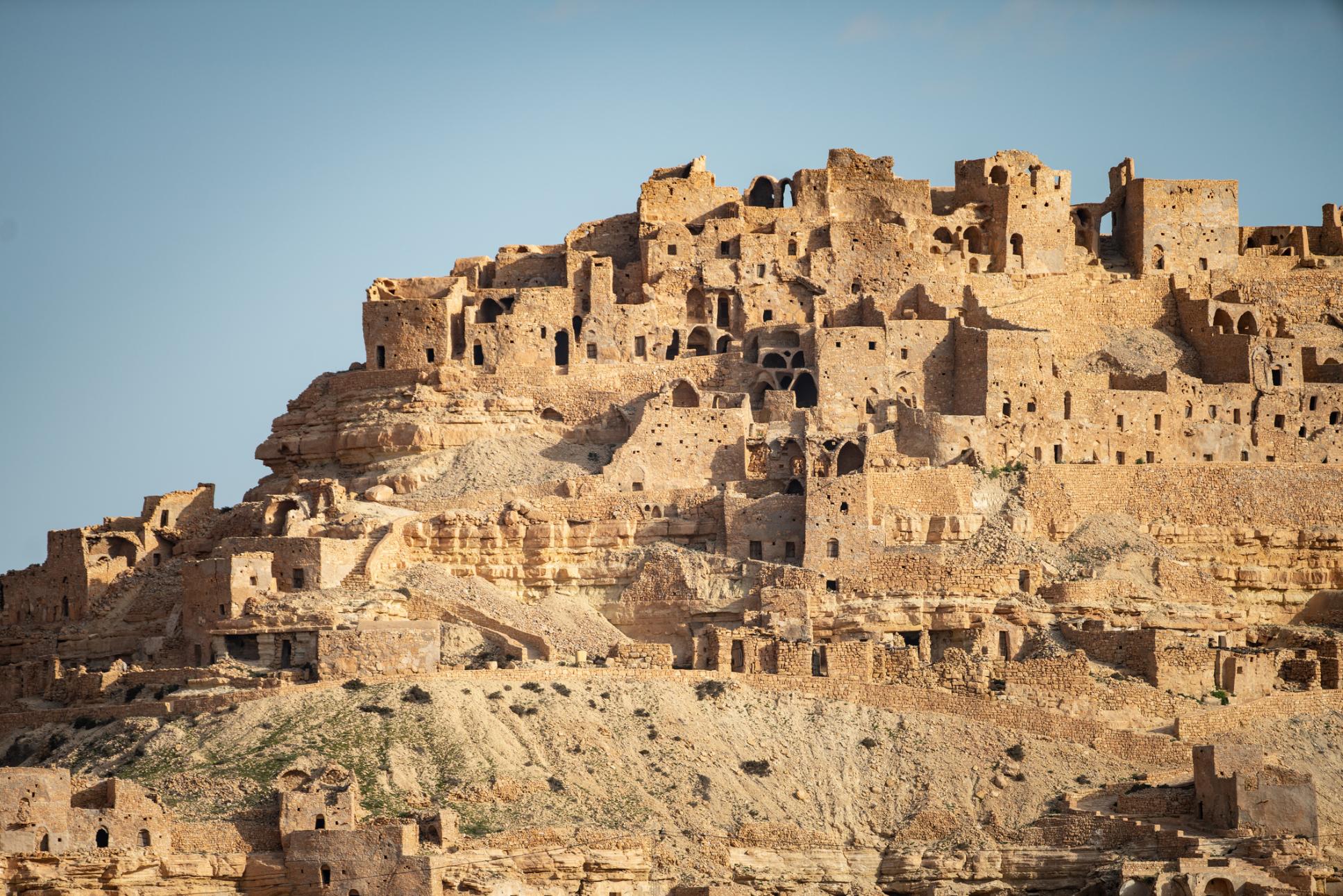
- Season: Spring
- Temperature: 32°C high, 14°C low (in Tozeur)
- Time zone: GMT+1
- Currency: Tunisian dinar
- Best for: Desert exploration
Tunisia remains under the radar of most adventurers, despite its inherent beauty. The northern part of the country is characterised by the Atlas Mountains, which extend into Tunisia from Algeria, while the northeastern Mediterranean coastline is ideal for watersports. Around 30% of the country is covered by the Sahara Desert, including the undulating sand dunes of the Grand Erg Oriental.
Head to the desertified Dahar region, in the south of Tunisia, to the Matmata Mountains, long inhabited by the Amazigh (indigenous people also referred to as the Berbers). Here you can hike between troglodyte villages and up stony peaks, including Jbel Mzanzen (610m/2,001ft), the highest point in the Dahar region. And don’t miss out on the quintessential desert experience - a camel ride into the Grand Erg Oriental, followed by camping overnight under the stars.
April is an ideal time to visit Tunisia, before the summer crowds and the sizzling temperatures of the warmer months. In the Sahara Desert, the weather is a few degrees warmer than on the coast, averaging between 22°C-26°C, although it’s much cooler when the sun goes down.
How to get there? Fly into Enfidha-Hammamet International Airport, your gateway to the south of Tunisia. You’ll then need to arrange a taxi or transfer to your accommodation.
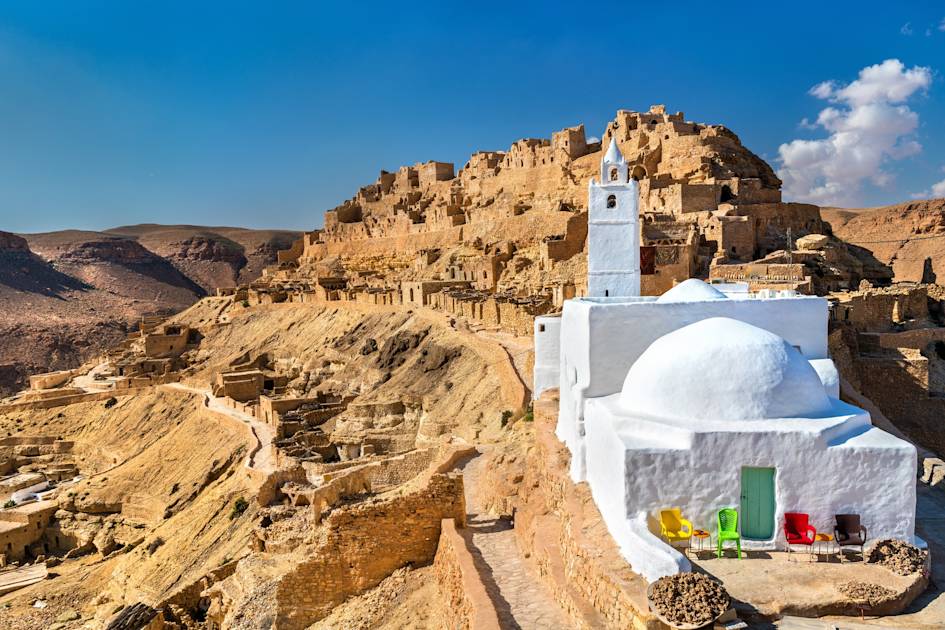
2. Himachal Pradesh, India
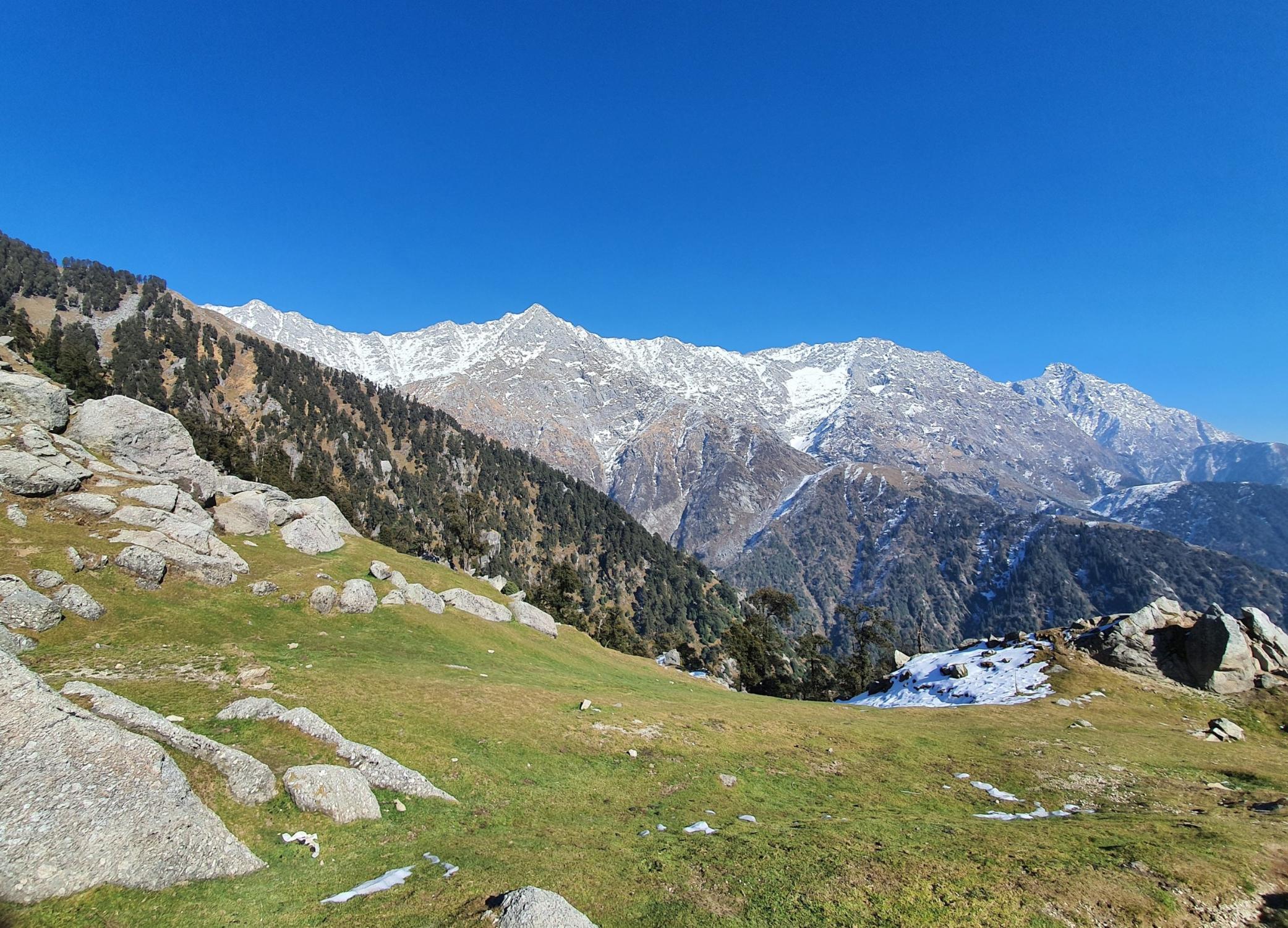
- Season: Dry
- Temperature: 26°C high, 12°C low (in Shimla)
- Time zone: GMT +5.30
- Currency: Indian rupee
- Best for: Morning yoga and mountain hikes
Himachal Pradesh is a state in India's western Himalayas, known for its picturesque green foothills and fertile valleys, surrounded by glaciated peaks. Get away from the bustle of Delhi in the old ‘summer capital’ of Shimla, where the British went in search of cooler weather. Unwind with some morning yoga, or quiet hikes through Himalayan cedar forests and up Hatu Peak (3,400m/11,154ft), with a sacred shrine perched on the summit.
You can also travel further into the mountains to Dharamshala, home to the Dalai Lama and Tibetan government-in-exile. Take some time to explore the Tibetan temple complexes here. There are also some great mountain hikes to be had, including an ascent of Triund (2,828m/9,278ft) for breathtaking views of the Himalayas.
April is a great time to visit the mountain state of Himachal, as you can escape the searing heat in the rest of the country. In Shimla you can expect daytime temperatures of around 24°C, and around 20°C in Dharamshala, with very little rain. Nights are cooler - between 12°C and 16°C.
How to get there? Fly into the international airport at Delhi. From Delhi, you can take a domestic flight to Shimla, or travel there by road (a 7-8 hour drive).
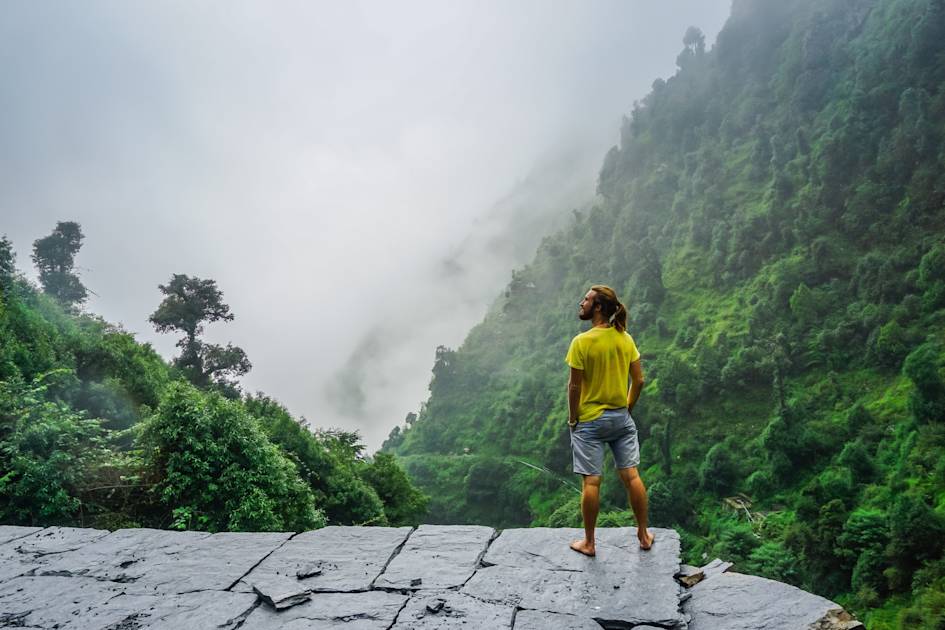
3. Bali, Indonesia
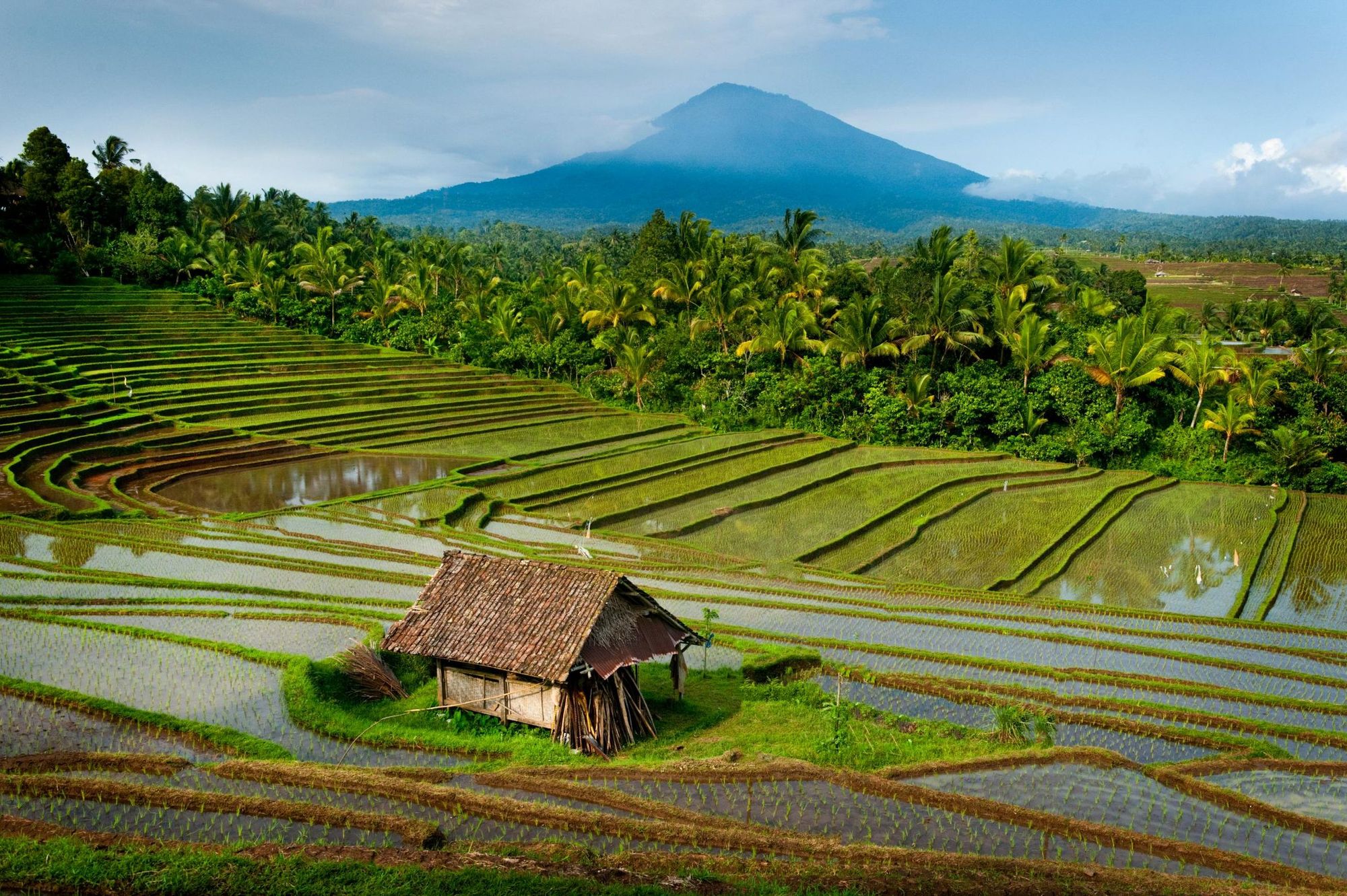
- Season: Dry
- Temperature: 32°C high, 22°C low
- Time zone: GMT+8
- Currency: Indonesian rupiah
- Best for: Jungles, mountains and beaches
Bali is a hugely popular tourist destination, so if you prefer more off-the-beaten-track spots, it might not be on your radar. But it should be - you can easily discover Bali’s quiet side, heading away from its popular coastal resorts and into its jungle-carpeted, mountainous interior.
One of the best ways to do this is by walking from coast to coast across Bali, along a newly created 62-mile (100km) hiking trail. The literal high point of the route is a challenging ascent of Mount Batakaru (2,276m/7,467m); you’ll stride out at dawn to reach the summit for sunrise.
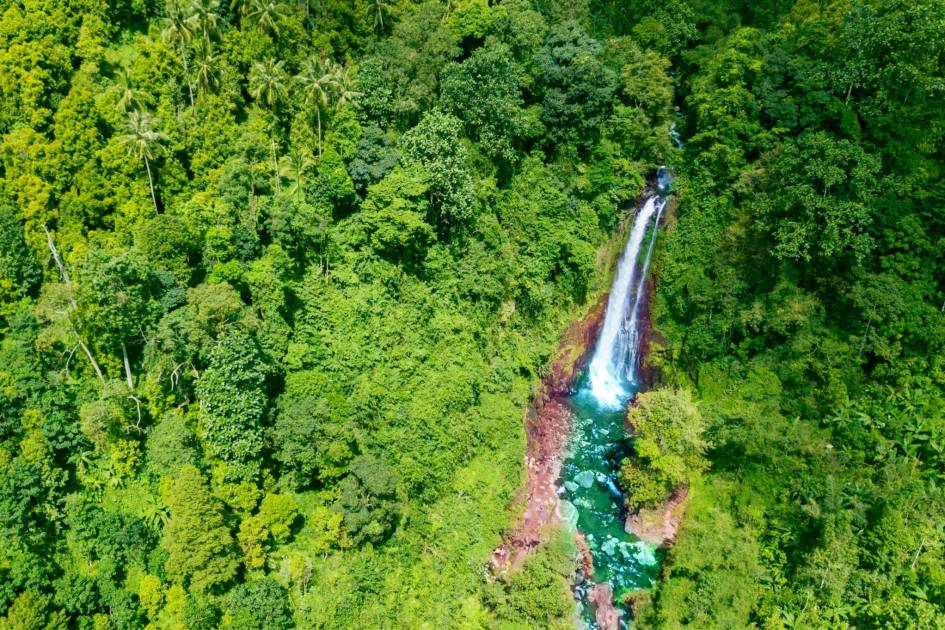
“Some people think that Bali is all about Kuta,” says Benny Onor, a local destination specialist who helped create the route. “By going coast-to-coast, we can show it’s really not. We want to show the different landscapes that Bali has. The trail goes through dense jungle, through rice fields and plantations, past waterfalls and up mountains.”
April is the start of the dry season in Bali, where the foliage is still verdant after the wet season, but the temperatures aren’t yet too high for hiking. Temperatures average around 26°C during the day - although it’s a few degrees cooler in the highlands.
How to get there? Fly into Bali’s well served international airport, Ngurah Rai International Airport.
4. The Yucatan Peninsula, Mexico
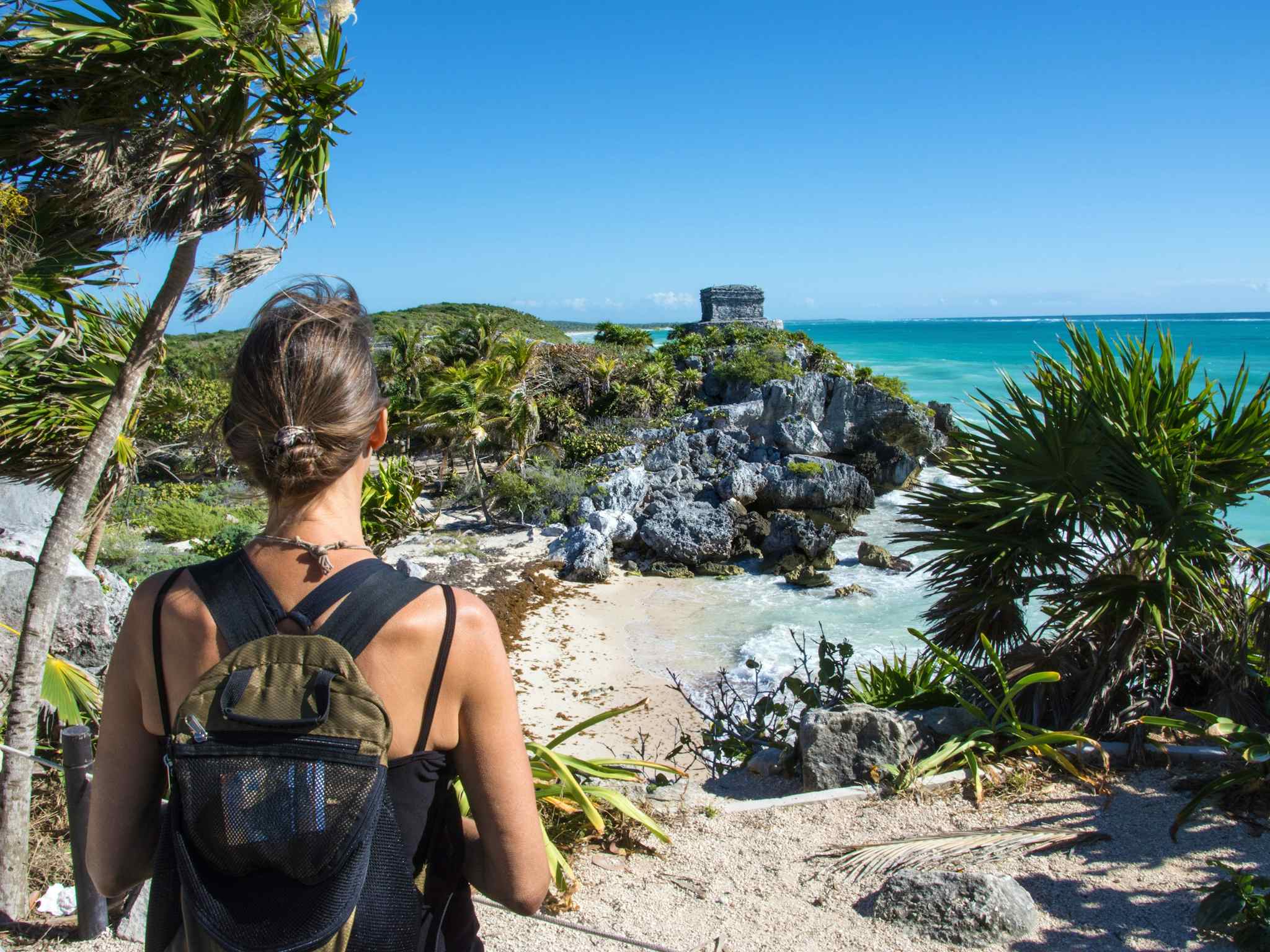
- Season: Dry
- Temperature: 29°C high, 23°C low
- Time zone: GMT-6
- Currency: Mexican peso
- Best for: Cenote swimming
Mexico’s Yucatan Peninsula is renowned for its sandy beaches and azure seas, with millions of travellers flocking to its coastal resorts to relax. But there’s another, quieter side to the Yucatan to be found just a few miles inland, in its protected nature reserves and ancient Mayan ruins. Like the UNESCO-protected Sian Ka'an Biosphere Reserve, a network of lagoons and canals which can be explored by boat, where you’ll find the ancient ruins of Muyil.
The Yucatan is known for its cenotes, water-filled sinkholes where you can go swimming or snorkelling. While some do get busy, there are some quieter community-run cenotes - we particularly recommend the Cenotes of Tankah, where you can go zipline and canoeing alongside a relaxing swim.

April is a great time to visit the Yucatan Peninsula. It’s the end of the dry season, with temperatures averaging 26°C during the daytime - perfect weather for cenote swimming.
How to get there? Cancun International Airport serves the Yucatan Peninsula (it’s a 90-minute drive from the airport to Tulum).
5. The Golden Circle, Iceland

- Season: Spring
- Temperature: 12°C high, -1°C low (in Reykjavik)
- Time zone: GMT
- Currency: Icelandic króna
- Best for: Icy landscapes and geothermal pools
Iceland in April is a country of contrasts - the blooming of springtime flowers, while the mountains are still carpeted in snow; the weather is beginning to warm up, but there’s still a chance of the northern lights blazing in the sky above.
It’s too early in the season for mountain hikes, but this is an ideal time to explore the Golden Circle, before the summer crowds arrive. Kayak the ethereal glacial lagoon of Sólheimajökull surrounded by towering icebergs, before clambering across the icy glacier itself. Marvel over the cascading waterfalls of Gullfoss and Kverna. The weather might be cold, but you can warm up in one of Iceland’s many geothermal pools, such as the ocean-facing Sky Lagoon.

April is a good time to visit Iceland if you’d like to explore with fewer people around - it’s quieter than summer and winter, and accommodation is also cheaper. The average temperature ranges from 0°C - 8°C, getting slightly warmer towards the end of the month.
How to get there? To explore the Golden Circle, fly into Keflavik Airport near Reykjavik. Car hire is available from the airport or city centre.
6. The Turquoise Coast, Turkey

- Season: Spring
- Temperature: 30°C high, 14°C low (in Antalya)
- Time zone: GMT+3
- Currency: Turkish lira
- Best for: Sun, sea and sailing
The Turquoise Coast is the 620 miles (997km) of coastline in the southwest of Turkey, encompassing white sandy beaches backed by mountains, quiet fishing villages and cultural attractions, including two of the Seven Wonders of the Ancient World: the Mausoleum of Maussollos in Halicarnassus; and the Temple of Artemis in Ephesus.
There are plenty of opportunities for adventure in the region, whether that’s hiking to the perpetually burning flames of Chimaera, sailing along the coast in a traditional Turkish gulet or snorkelling in the crystalline waters.
April is a fantastic time to visit Turkey; the start of spring, when temperatures are beginning to rise. This year there were highs of 30°C, but a more common average is 22°C - a good temperature for hiking and watersports.
How to get there? Fly into Antalya or Dalaman International Airport - the Turquoise Coast lies between them.
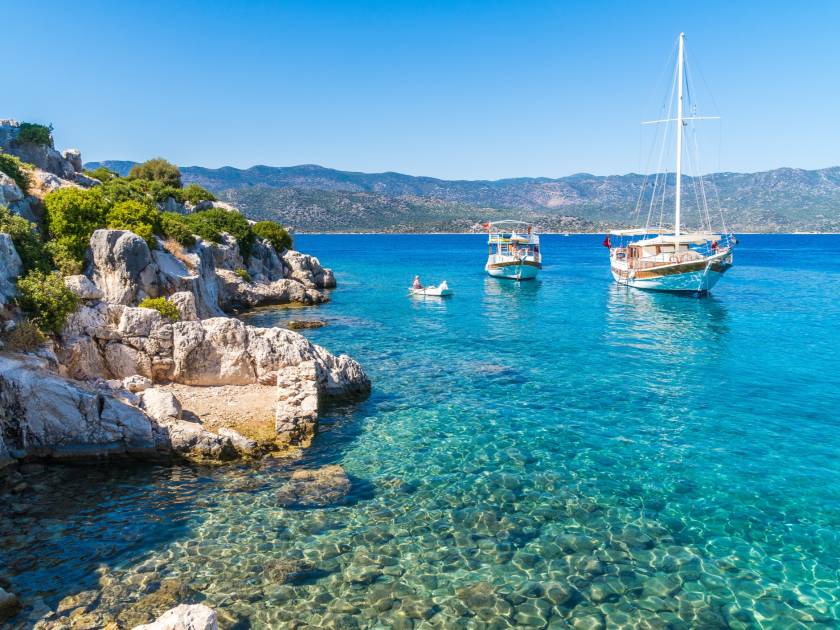
7. Sardinia, Italy

- Season: Spring
- Temperature: 24°C high, 7°C low
- Time zone: GMT+2
- Currency: Euro
- Best for: Island exploration
The sun-kissed island of Sardinia has a lot to offer adventure travellers. Topping the list is the Selvaggio Blu Trail, a 24.8-mile (40km) coastal trek including two via ferratas, five abseils and 4,200m (13,779ft) of vertical gain - you’ll need a guide for this one.
If you’re not a fan of heights, we recommend exploring Sardinia’s rugged coastline via sea kayak. Sate your appetite at the end of the day with rustic Sardinian fare such as wild boar stew and homemade gnocchi.

Sardinia in April is beginning to warm up, with daytime temperatures averaging 18°C - ideal weather for hiking or kayaking - but before the arrival of summer crowds. Take warm layers for those chillier evenings.
How to get there? To access the south of the island, fly into Cagliari Airport; fly into Alghero if you’d prefer to be based in the north.
8. The Highlands, Sri Lanka
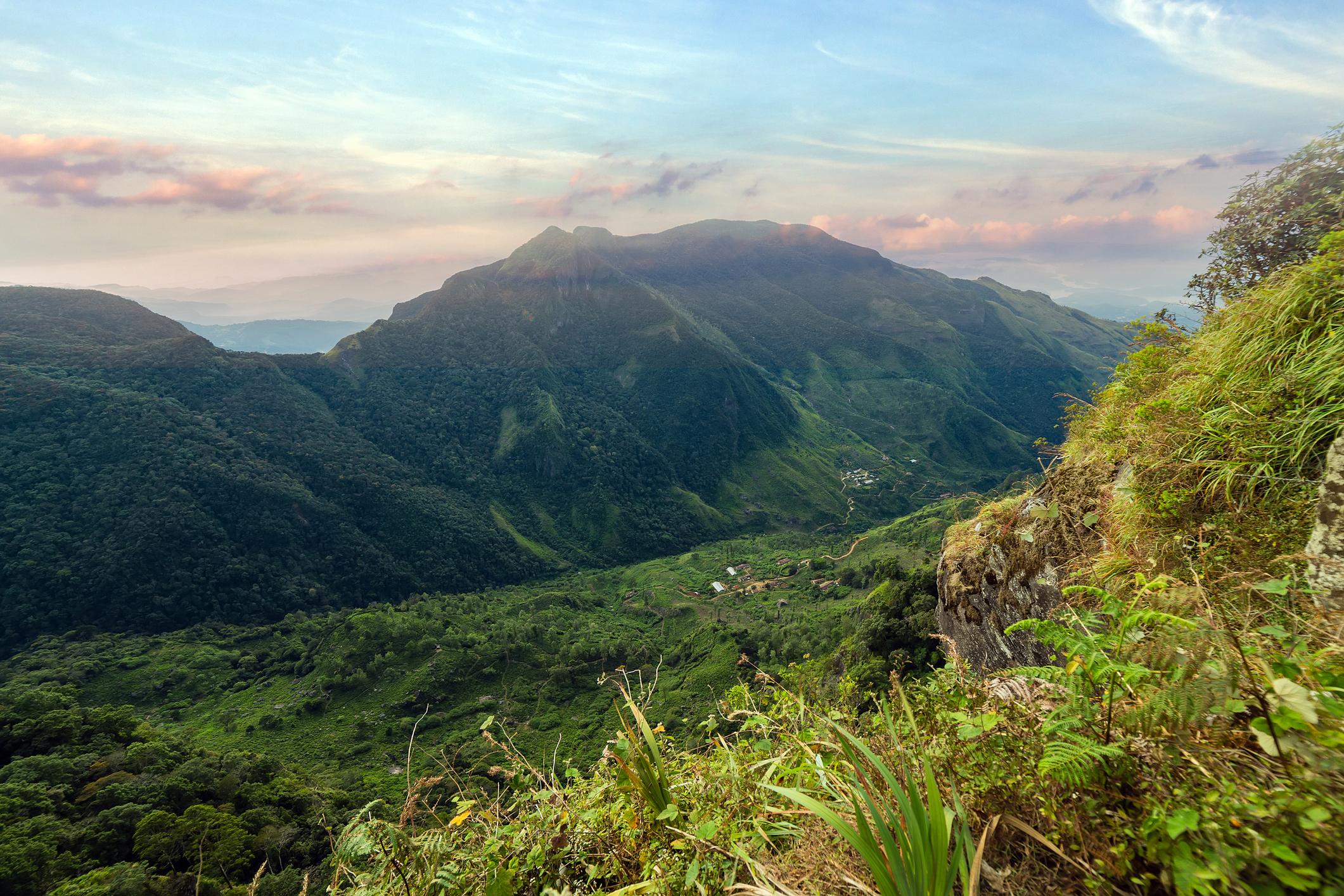
- Season: Dry season
- Temperature: 28°C high, 22°C low (in Kandy)
- Time zone: GMT +5.30
- Currency: Sri Lankan rupee
- Best for: Beaches and forest hikes
The teardrop-shaped island of Sri Lanka combines a coastline of tropical beaches with a mountainous, forest-carpeted interior. Travel to the Central Highlands and you’ll also discover hillsides carpeted with emerald tea bushes. Highlights include taking the train from Kandy to Ella and climbing Sigiriya, the ancient rock fortress jutting up through the rainforest canopy. Destination expert Viraj Fernando also recommends hiking in Horton Plains National Park, along the newly created Pekoe Trail.
“You can see it's a very Scottish type of landscape - mist-clad mountains and windy plateaus, very rich in flora,” he says. "There's a waterfall called Bakers Fall, which was founded by the British planter James Baker - it was named after him. There’s also a place called World’s End; it's a mountain cliff with a steep descent.”
April marks the end of the dry season, with temperatures in the low thirties on the coast. Asd you ascend to higher elevations it becomes cooler, though - Nuwara Eliya (1,868m/6,128ft), daytime temperatures are between 18°C-23°C.
How to get there? Fly into Bandaranaike International Airport, near the capital city of Colombo.
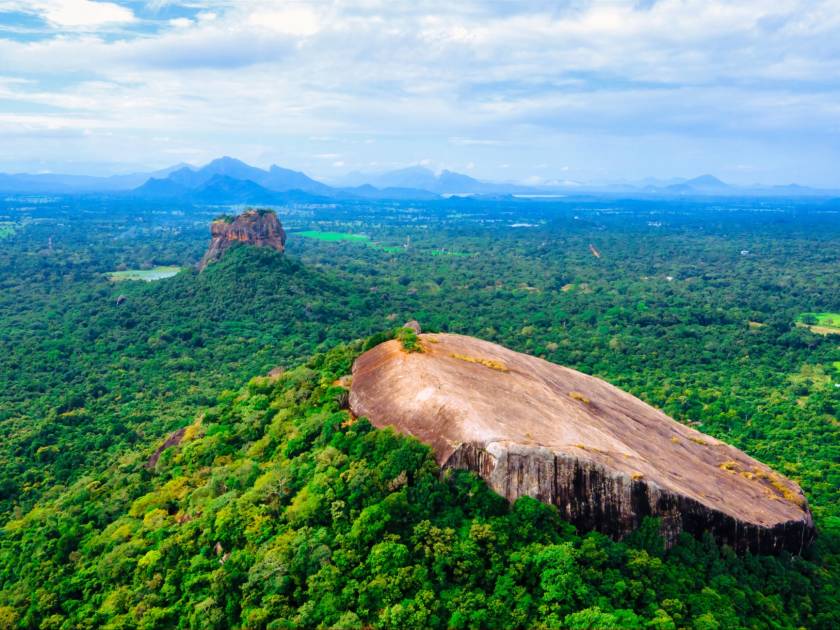
9. The Carpathian Mountains, Romania
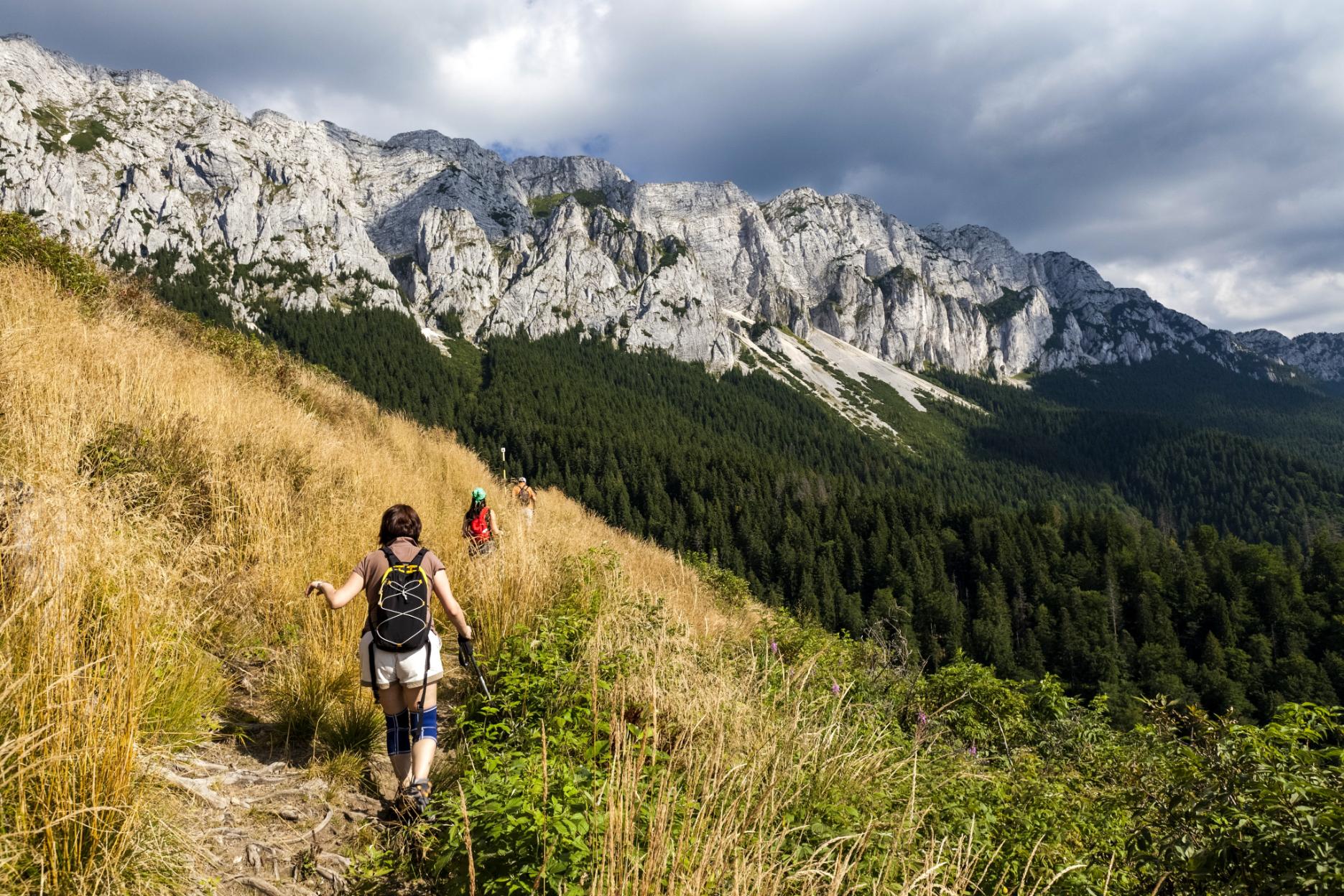
- Season: Spring
- Temperature: 19°C high, 7°C low (in Brașov)
- Time zone: GMT+3
- Currency: Romanian leu
- Best for: Castles and bears
Base yourself in the characterful city of Brașov and explore the surrounding Carpathian Mountains, known as one of Europe’s wildest landscapes.
“It’s almost 2000km2 of continuous wilderness,” says Duarte de Zoeten, co-founder of the rewilding organisation Mossy Earth. “You don’t find that in most places in Europe. There are no cities breaking it up - so in some areas you have valleys and valleys without a single road. You have an old growth forest, and the largest population of large carnivores anywhere in Europe - bears, wolves, lynx, you name it.”
Romania is home to around 60% of Europe’s brown bear population, around 6,000 of which live in the Carpathians - see if you can spot them from a hidden bear hide. You’ll have a guaranteed sighting if you visit the Libearty Bear Sanctuary, where formerly captive bears now live in 70 forested hectares in the Carpathians.
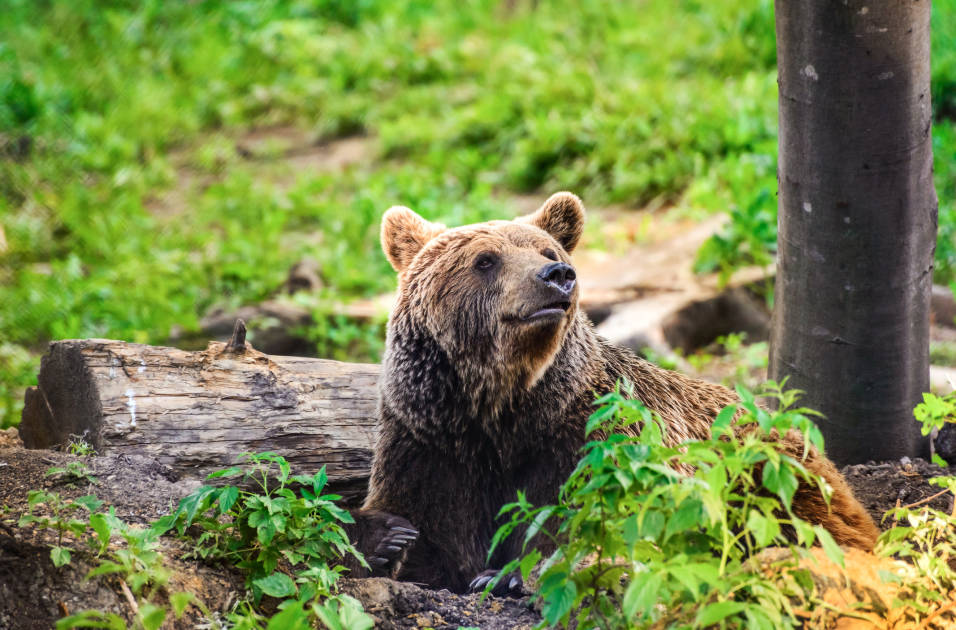
This is a fantastic region for hiking. We recommend hiking up Postavaru Mountain (1,799m/5,902ft), an easy summit hike with views of the surrounding mountains and forest. And don’t miss out on a trip to the legendary Bran Castle, the home of Dracula.
April is a month of transformation in the Carpathians - there might still be snow at higher elevations, but temperatures are beginning to warm up and new leaves are beginning to bud on the trees. It’s one of the best months for bear spotting, as the bears have woken up after their winter hibernation and are busy foraging for food.
How to get there? Fly into Brașov Airport, and get a taxi or transfer to the town centre. There are also regular direct trains between Brașov and the capital of Bucharest.
10. Taghazout, Morocco

- Season: Spring
- Temperature: 25°C high, 15°C low
- Time zone: GMT+1
- Currency: Moroccan dirham
- Best for: Surfing
Taghazout is the surf capital of Morocco, a former sleepy fishing village nestled on Morocco’s Atlantic coast, surrounded by vast golden beaches on either side. Although growing in popularity, it’s got a laid back atmosphere, with surf schools and yoga retreats side to side with local restaurants and handicraft stalls. Tamraght, just down the road, is a quieter option.
If you want to learn to surf, this is the place to do it. Find a surf camp offering comfortable riad accommodation alongside surf sessions - and perhaps even offering yoga sessions to stretch out tired limbs. You’ll be taken to different beaches every day as you chase the best surf conditions.
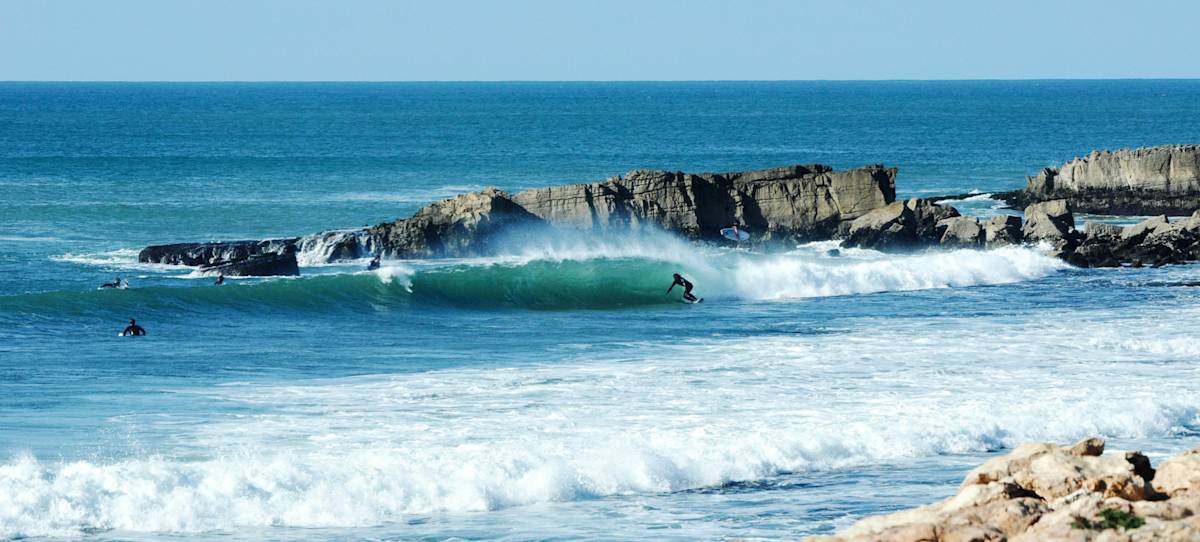
Morocco is a popular holiday destination to visit in April - hotter than Europe, but not too hot for hiking or watersports. April signals the beginning of the summer surf season in Morocco - the water is beginning to warm up and waves tend to get smaller, making this the perfect time for beginners to learn.
How to get there? Fly to Agadir International Airport - it's just over an hour's drive to Taghazout.
11. Namib-Naukluft National Park, Namibia
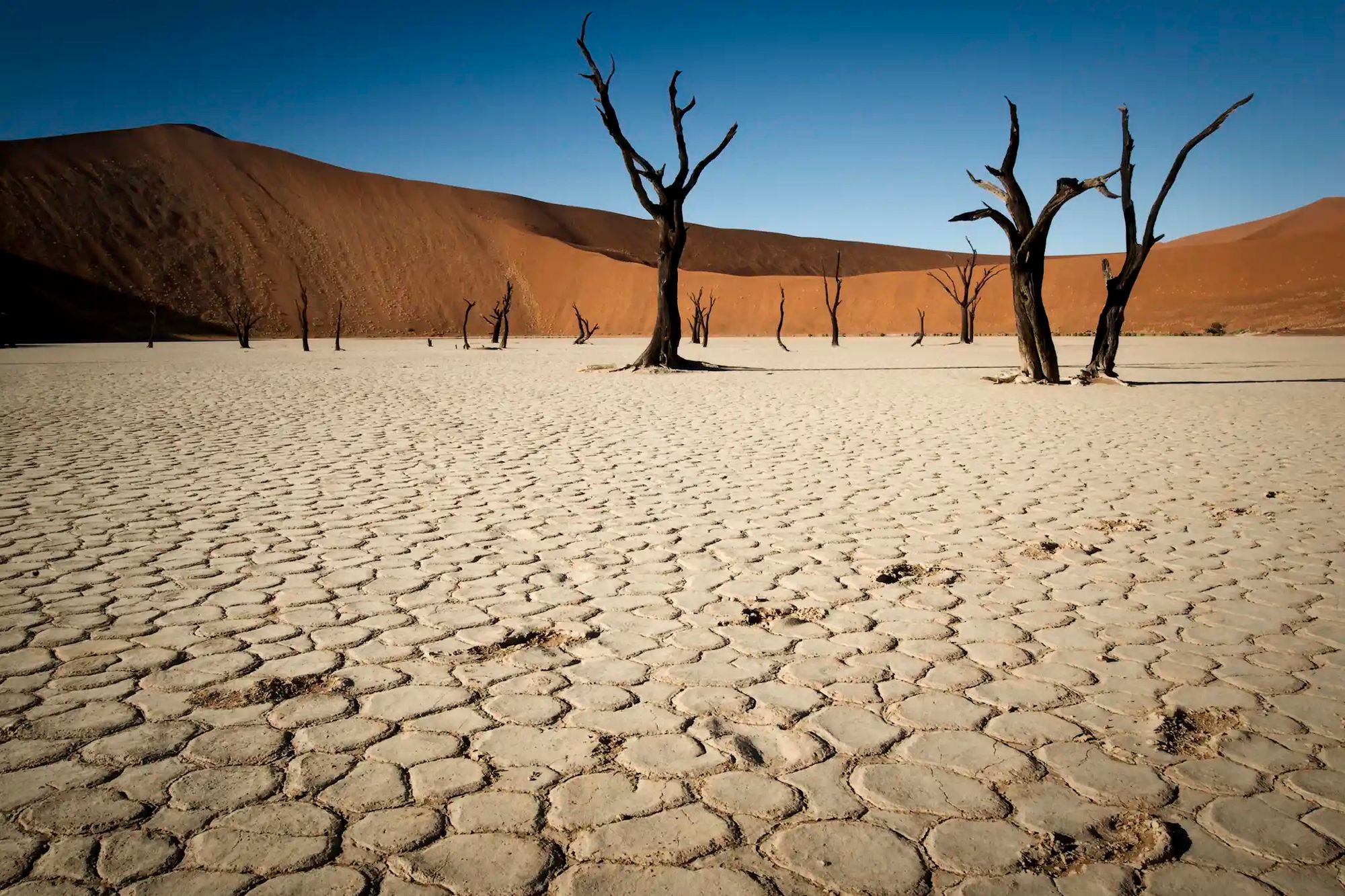
- Season: Summer
- Temperature: 28°C high, 13°C low
- Time zone: GMT+2
- Currency: Namibian Dollar
- Best for: Desert scenes
The Namib-Naukluft National Park in western Namibia runs from the Atlantic Ocean to the edge of the Great Escarpment, taking in part of the Namib Desert and including the Naukluft Mountains. There’s plenty of hiking trails through the park, whether you’re exploring the salt pans and red dunes of Sossusvlei, or tackling the Olive Trail, which traces the path of the Naukluft River before ascending to a 1,900m/6,233ft ridge past waterfalls and natural swimming holes.
Make sure you spend a night or two camped out in the desert, enjoying the silence and the sight of thousands of stars, their shine undimmed by light pollution. You can also head to the coast at Sandwich Harbour, where giant sand dunes tumble towards the Atlantic and rusted shipwrecks stud the sand.
April is the end of the summer season and the tail end of the wet season - having said that, the Namib-Naukluft National Park sees around 5mm of rainfall across April. The temperatures are cooling, and average a pleasant 25°C in the daytime (dropping once the sun goes down) - the humidity is lower and wildflowers are blooming.
How to get there? Windhoek International Airport is the gateway to adventures in Namibia.
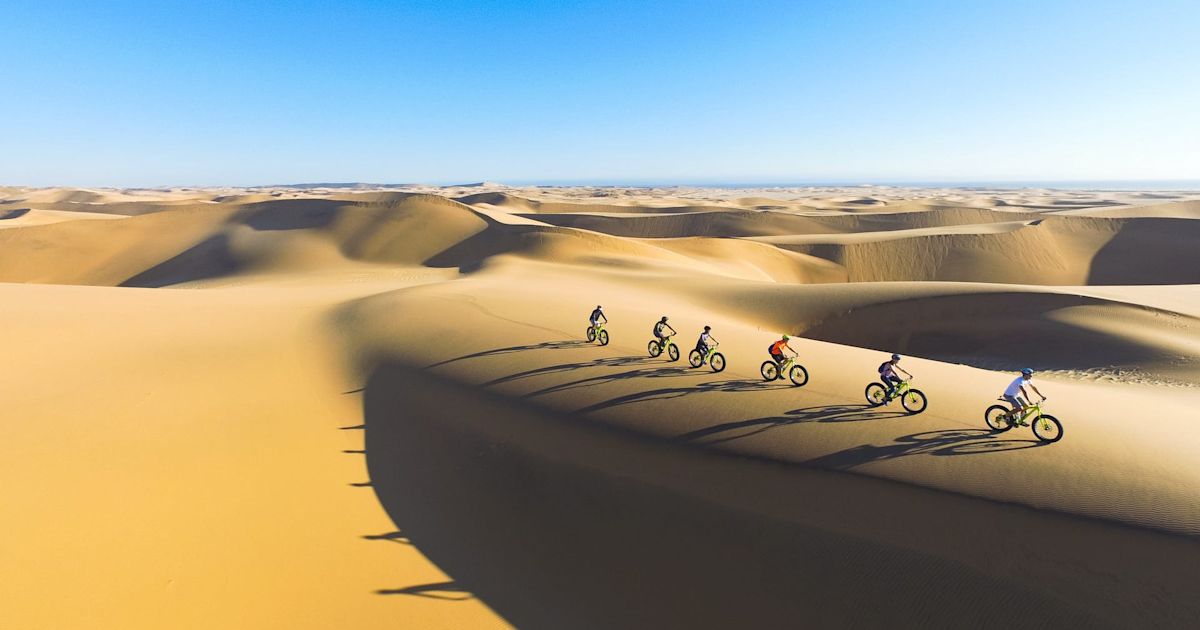
12. The Jordan Trail, Jordan
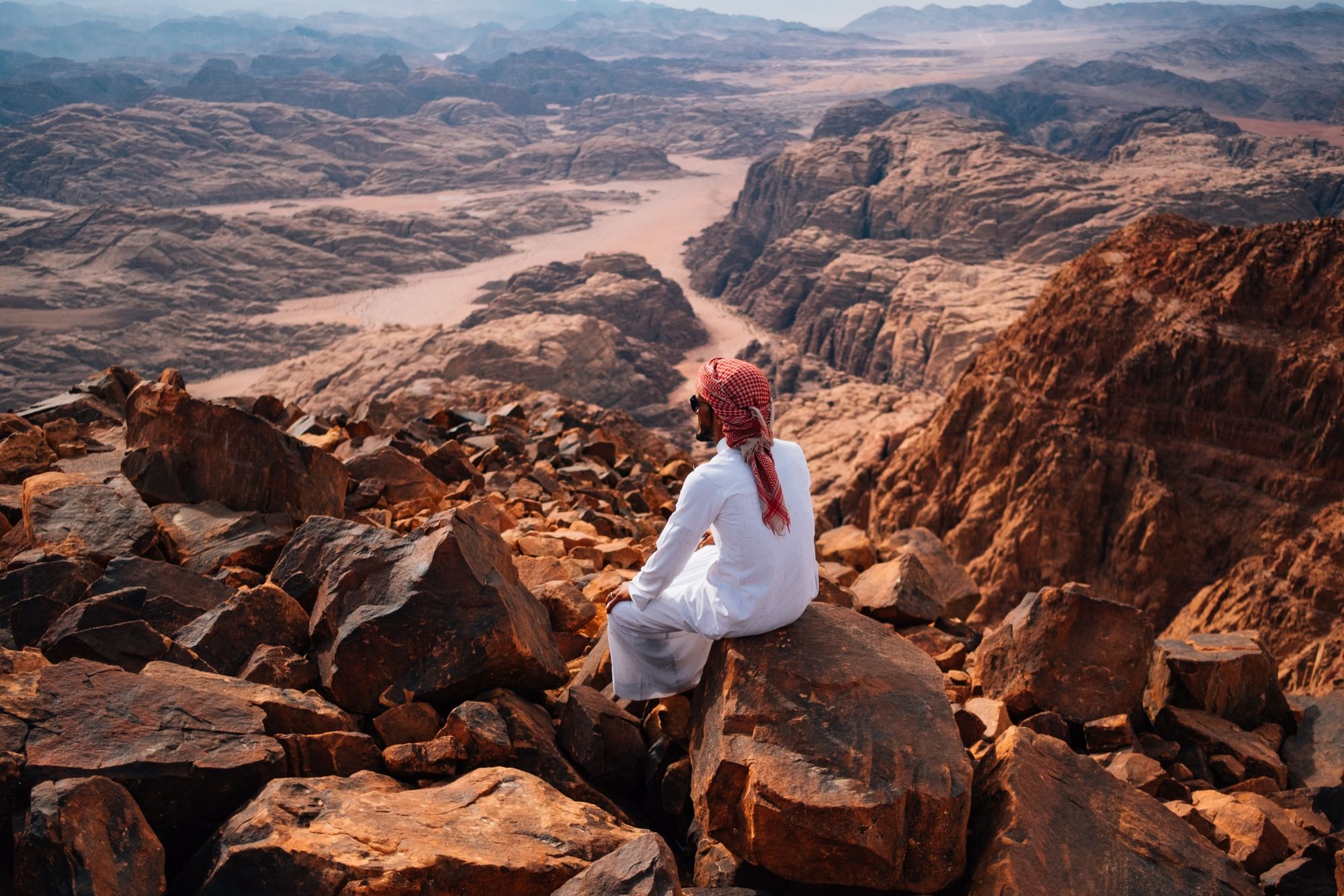
- Season: Spring
- Temperature: 26°C high, 11°C low (Petra)
- Time zone: GMT+3
- Currency: Jordanian Dinar
- Best for: Travelling from the desert to the sea
The Jordan Trail is a new hiking and cycling route which runs 420 miles (675km) from Umm Qais, a town in the north of Jordan, to Aqaba in the south - passing through the capital of Amman, the ancient city of Petra and the desert of Wadi Rum, a vast expanse of rust-coloured sand and sandstone rock formations, before finishing at the Red Sea.
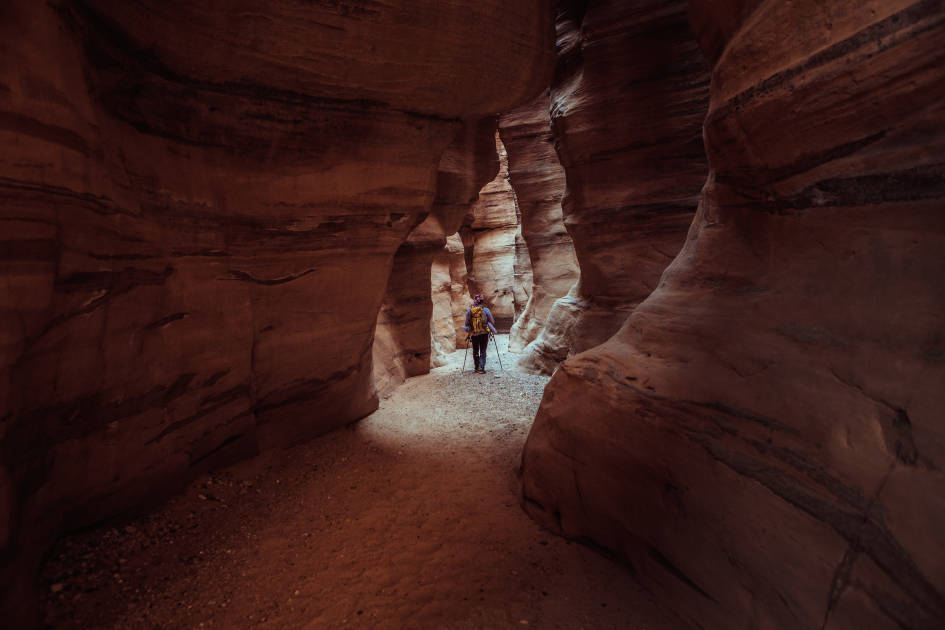
The trail enables hikers to see these popular attractions alongside places untouched by tourism.
“The trail goes through Petra, but it also distributes income throughout the country, especially to communities that don't get enough share of the tourism" says Ayman Abd Alkareem, one of the trail's founders. "Travellers buy bread from bakeries, go to small grocery shops and remote areas that don’t get their share.
April is one of the most popular months to visit Jordan, due to the warm weather - temperatures average 24°C in Petra and 29°C in Aqaba.
How to get there? Visitors to Jordan fly into Queen Alia International Airport, near the capital of Amman.
13. The Himalayas, Nepal
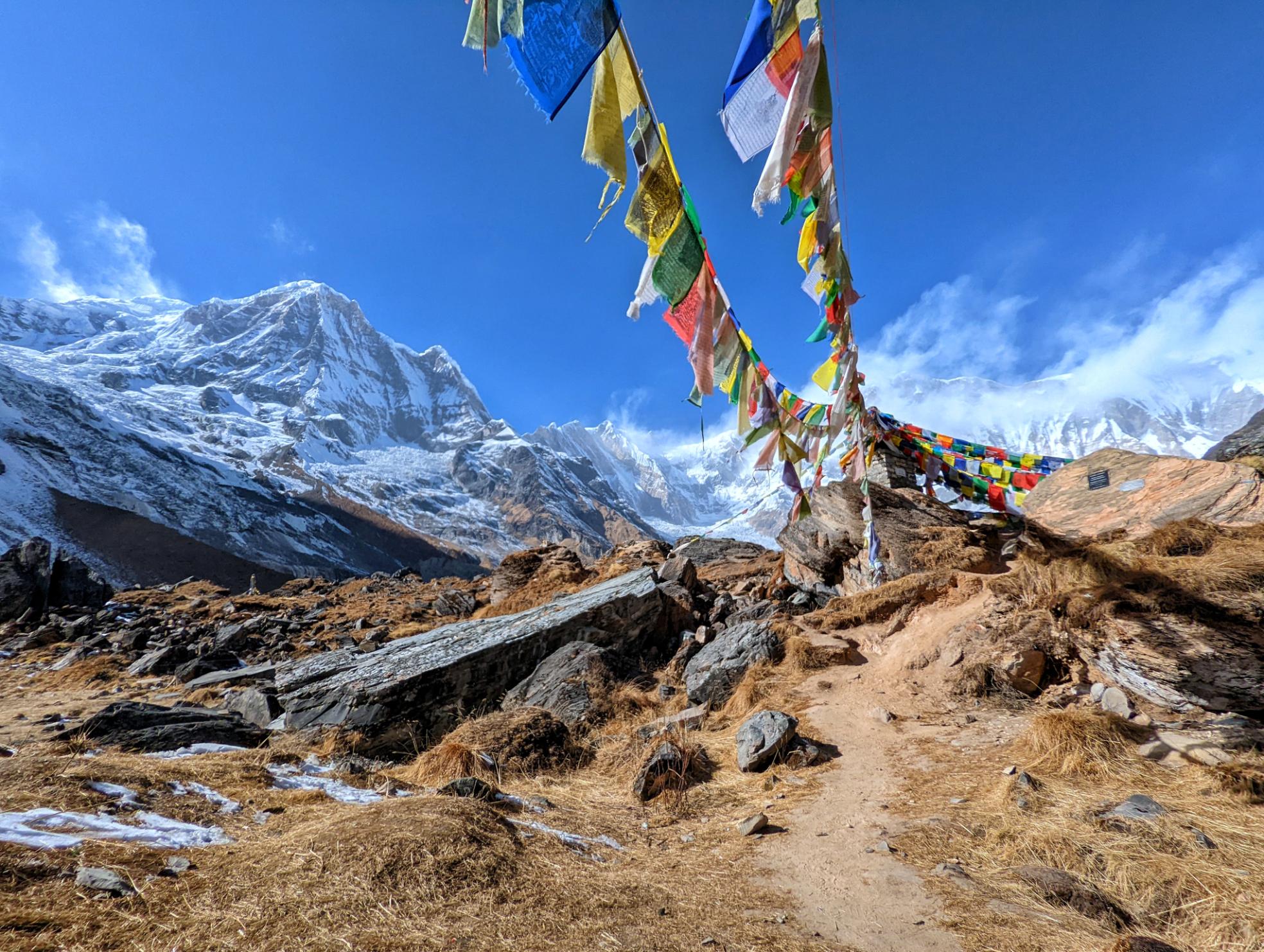
- Season: Spring
- Temperature: 9°C high, -2°C low (in Namche Bazaar)
- Time zone: GMT+3
- Currency: Nepalese rupee
- Best for: Himalayan views
If you want to spend April trekking, visit Nepal’s Himalayas, home to the highest mountains in the world, including mighty Mount Everest. There’s a seemingly endless list of treks, including the Everest Base Camp trek, taking you deep into the mountains, across glaciers and suspension bridges towards the iconic base camp. Then there’s the Annapurna Sanctuary route, which takes you to Annapurna Base Camp (4,130m/13,549ft), or the longer Annapurna Circuit trek over the epic Thorong La pass (5,416m/17,769ft).
April is one of the best months for trekking in Nepal. The weather is cold but clear, and although trails might be busier than other times of year, you’ll have plenty of chance to bond with other hikers.
How to get there? Fly to Kathmandu, Nepal’s capital. For the Annapurna Circuit and Sanctuary routes you’ll need to drive to Tal (9-10 hours), and for Everest Base Camp you’ll fly on to Lukla.
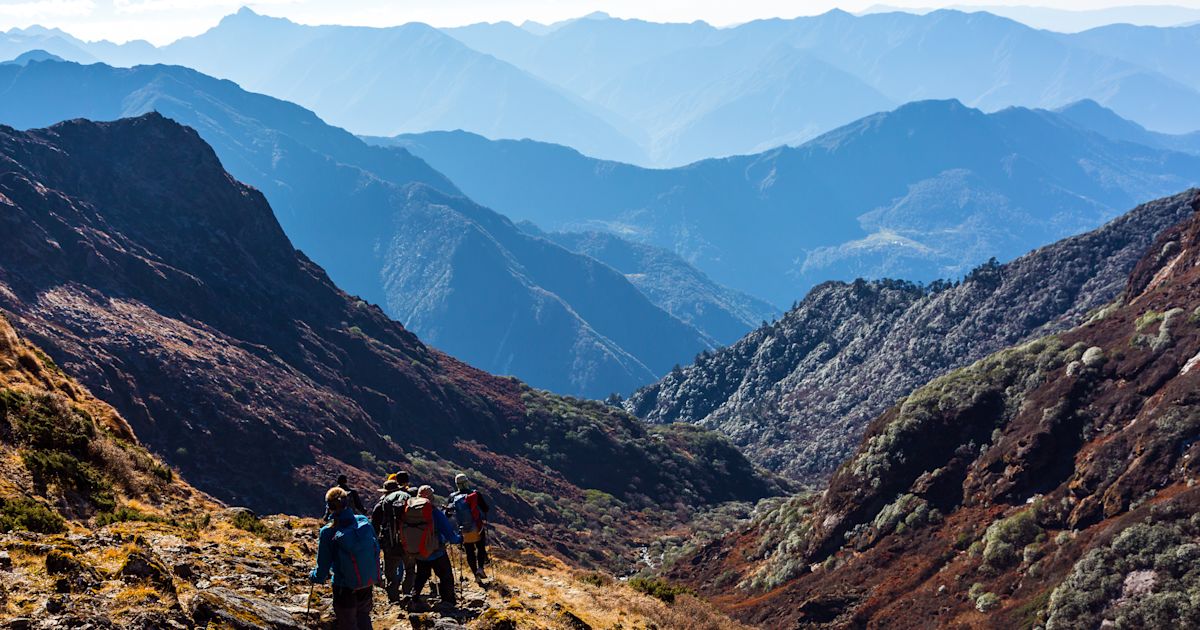
14. Gran Canaria, The Canary Islands
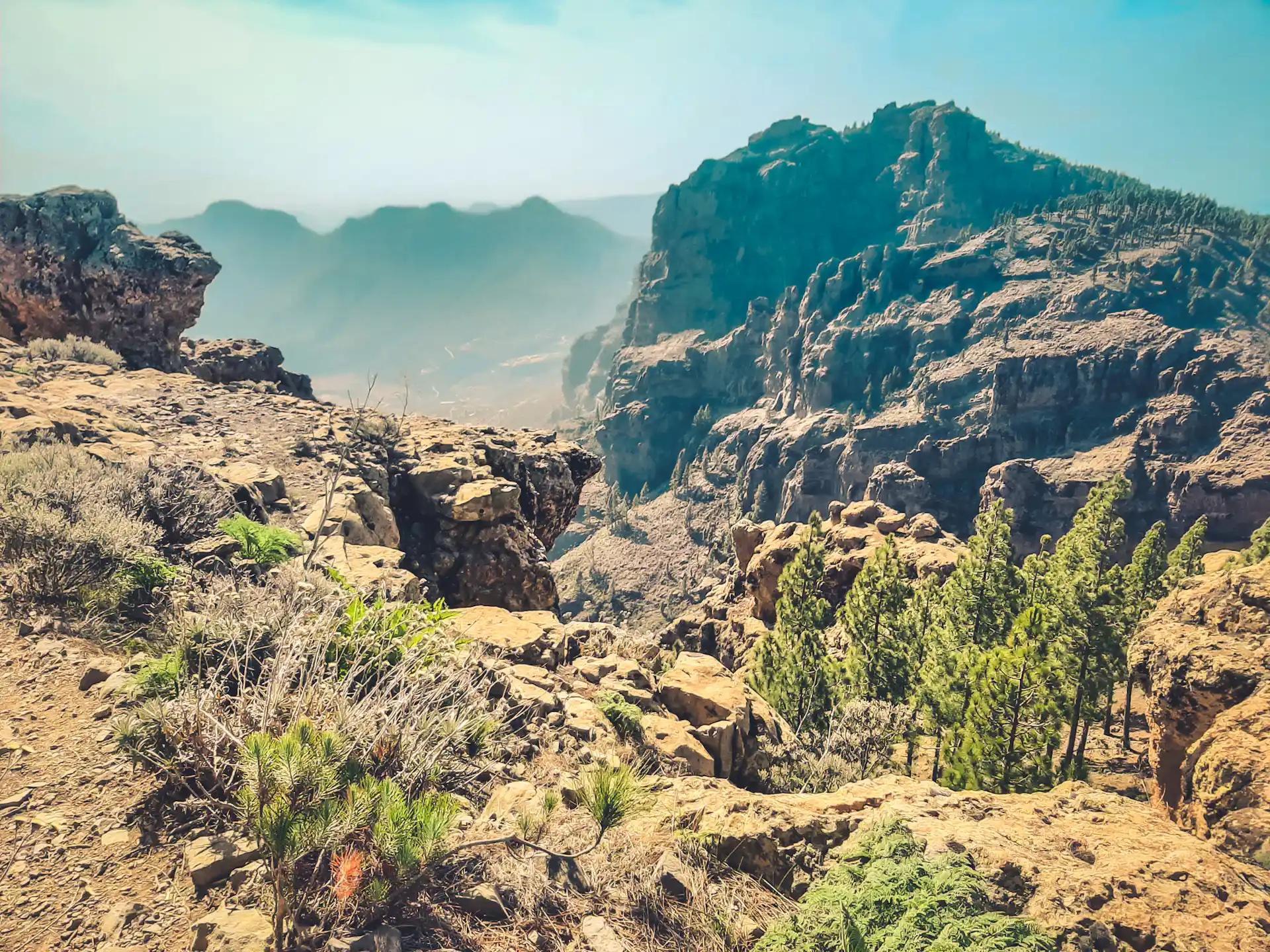
- Season: Spring
- Temperature: 23°C high, 11°C low
- Time zone: GMT +0
- Currency: Euro
- Best for: Hiking across a ‘continent in miniature’
Gran Canaria is described as a ‘continent in miniature’, thanks to the diversity of its landscapes - rugged coastline leading to fertile valleys and rocky ravines, known as ‘barrancos’, and an arid volcanic hinterland.
We recommend a challenging multi-day hike across the island, beginning near Barranco de Guayadeque and heading through the Caldera de Tejeda, a massive volcanic crater studded with intriguing rock formations - like the Roque Nublo monolith - and ancient cave houses.
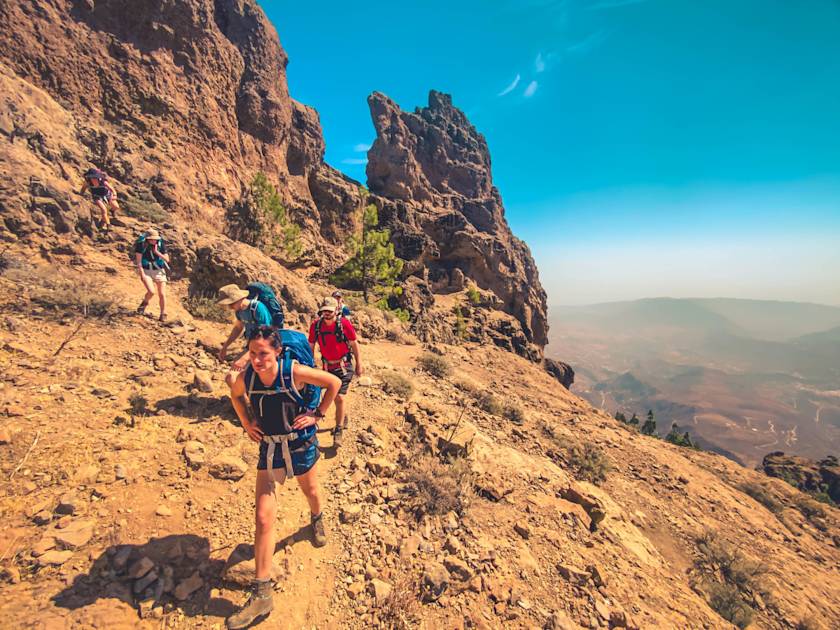
From here, hike through ancient laurisilva forest and the verdant Agaete Valley towards the coastal town of Agaete, where you can celebrate with a dip.
In April, temperatures in Gran Canaria average around 20°C, which is perfect for hiking. It’s cooler at night, though, especially at higher elevations.
How to get there? Fly to Gran Canaria international airport, which has connections to destinations across Europe and Africa.
15. Dahab, Egypt
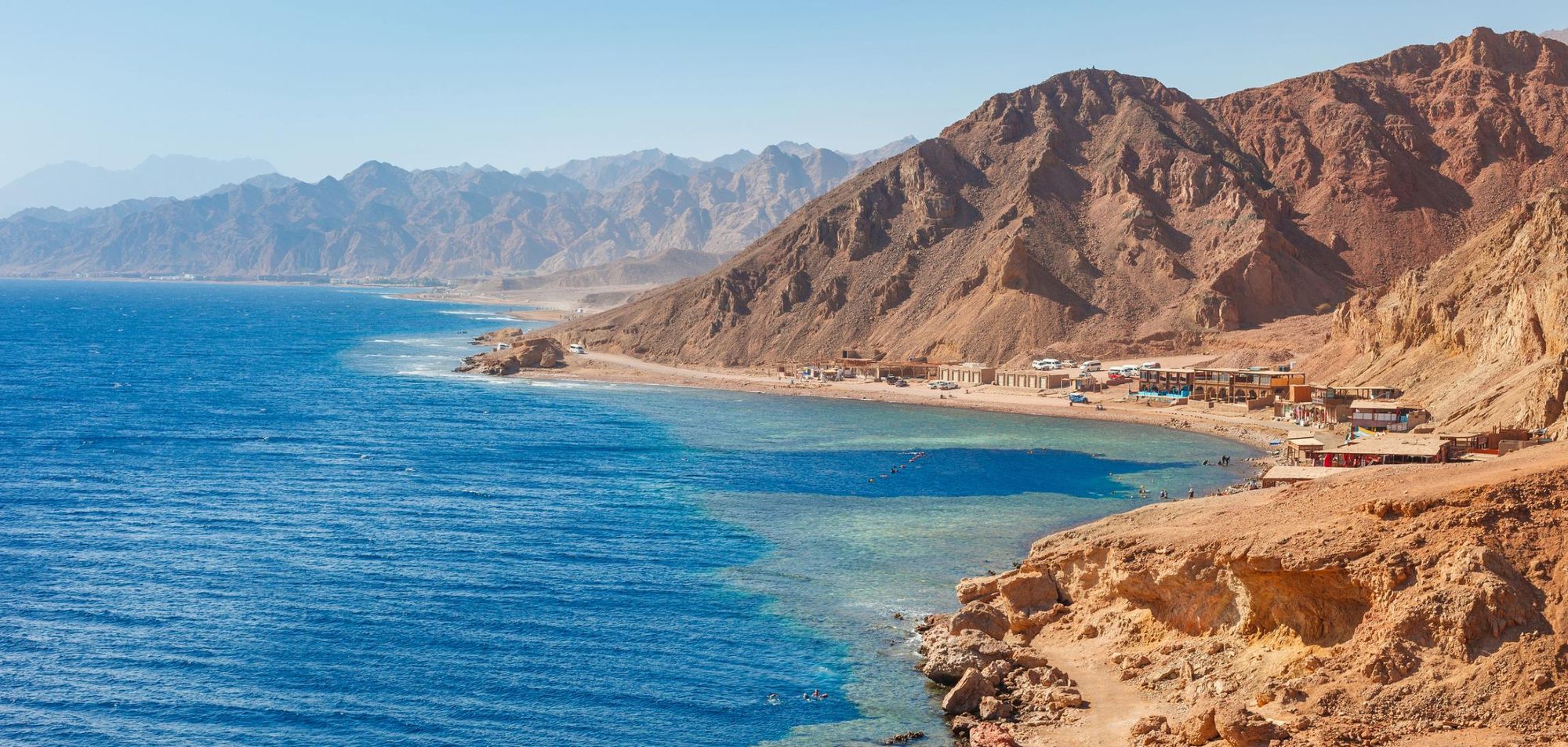
- Season: Spring
- Temperature: 29°C high, 22°C low
- Time zone: GMT+2
- Currency: Egyptian pound
- Best for: Snorkelling and desert hikes
Dahab is a coastal town on Egypt’s Red Sea coast, a laidback travellers’ hangout that’s a renowned spot for learning to scuba dive, with plenty of Bedouin dive masters from the surrounding areas.
“The first time I came to Dahab was with my father, in 1983,” says Said Khedr, a Bedouin dive master. “It was my first time seeing the sea. Back home in the desert, I would close my eyes and see the amazing colours of the coral reef, and the blue water stretching all the way to Saudi. Unsurprisingly, when I finished school, I returned to Dahab.”
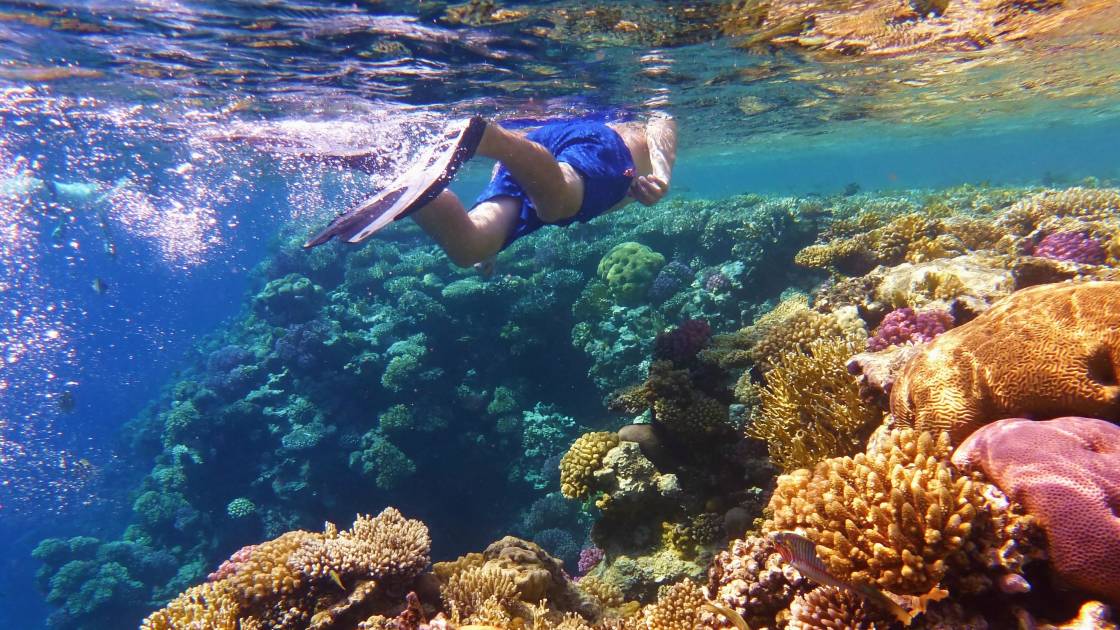
With its warm water and clear seas, Dahab is also a good spot for snorkelling - Blue Hole is one of the best spots for both diving and snorkelling.
Located on the edge of the Sinai Desert, Dahab is also your gateway for desert adventures. Try rock climbing in the desert’s granite canyons, or hike ancient Bedouin trails with a local guide.
April is a great time to visit Dahab, with clear skies and temperatures averaging a balmy 25°C. The sea temperature is a pleasant 22°C.
How to get there? Fly to Sharm El Sheikh Airport; it's a 60 minute journey by road to Dahab.
16. Mallorca, Balearic Islands
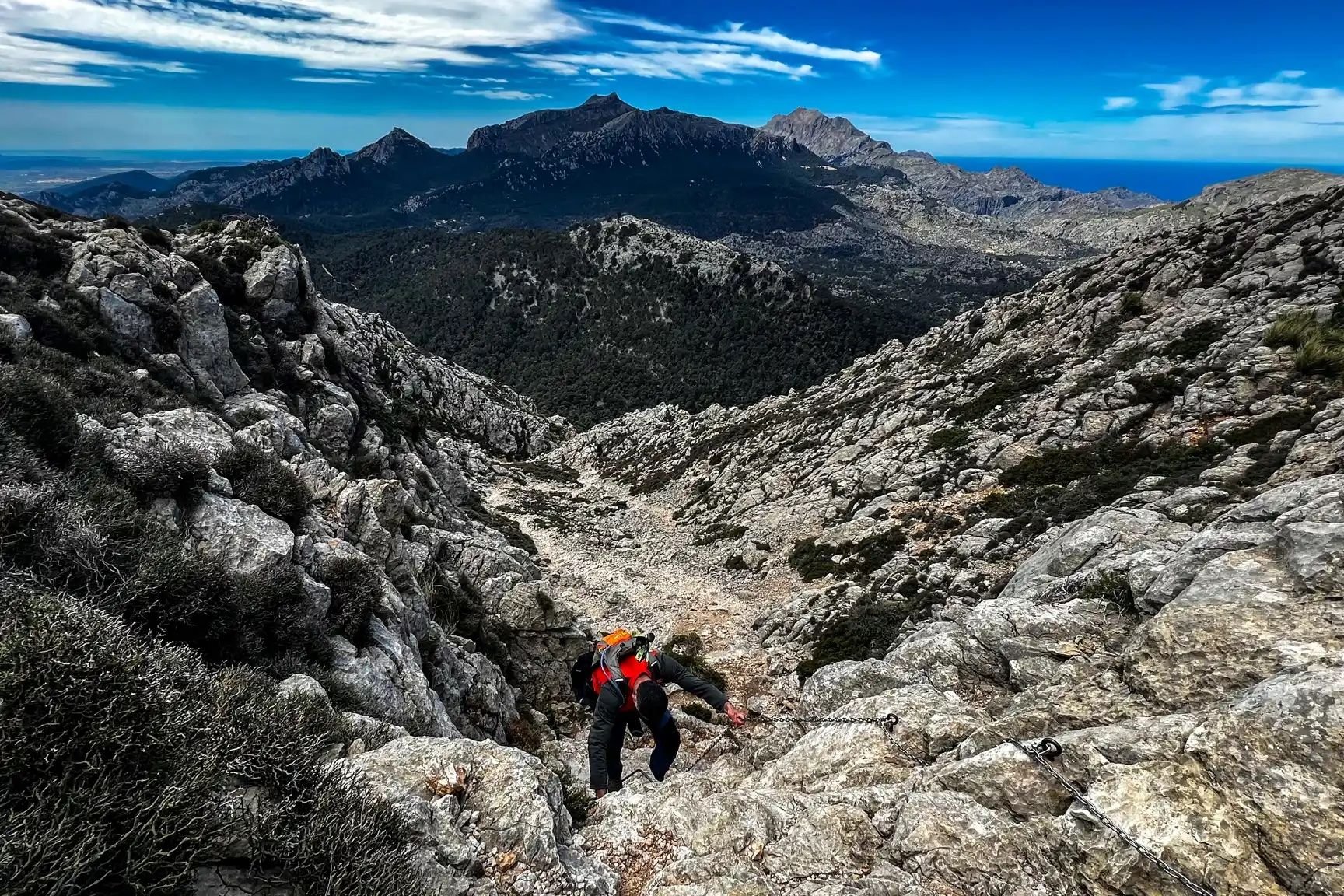
- Season: Spring
- Temperature: 24°C high, 5°C low (in Palma de Mallorca)
- Time zone: GMT+1
- Currency: Euro
- Best for: Hiking and yoga retreats
Mallorca, the largest of Balearic Islands, is known for its beaches and nightclubs - but it’s so much more than this. Head inland to the UNESCO World Heritage Tramuntana Mountains, exposed limestone peaks with ocean views, to discover the island’s quieter side.
“Even I was surprised by the landscape when I first came here,” says Spanish mountain guide José Miguel Real, who leads tours on the island. “No mass tourism, no people - and it’s a mountain range which reaches 1,300m above sea level, so the views across the ocean are incredible; as is the gastronomy.”
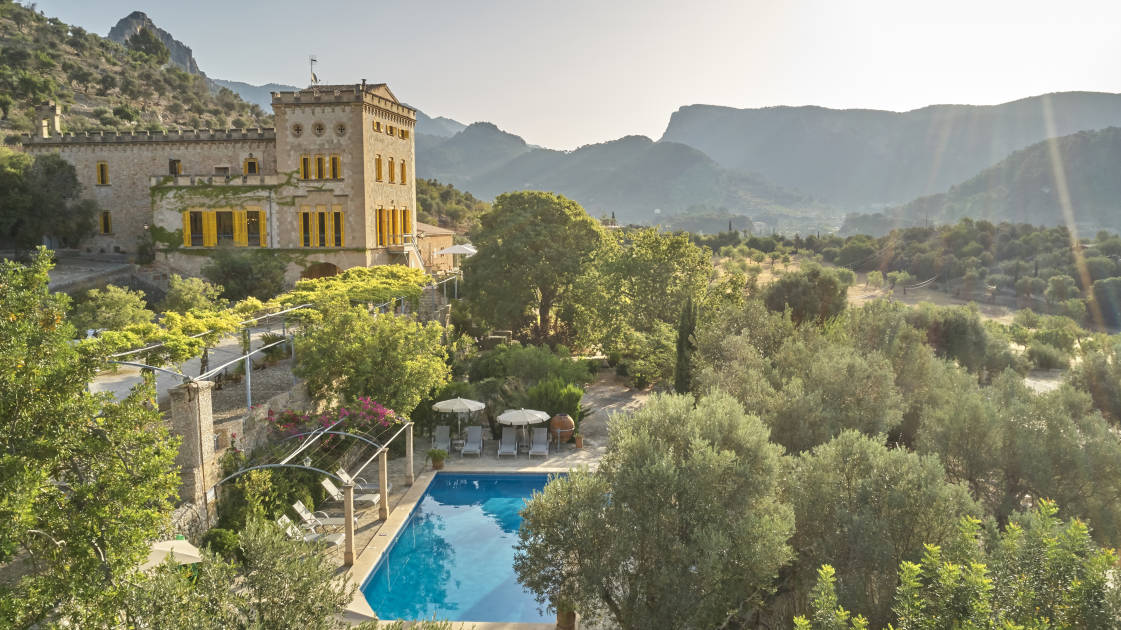
One of the most challenging hikes in the Tramuntana is a circular route up three of its highest peaks: Sa Rateta (1,113m/3,651ft); Na'Franquesa (1,067m/ 3,500ft); and Puig de l'Ofre (1,093m/ 3,585ft). Relax with early morning yoga sessions and make sure to hit the beach for a swim on a sunny day - we like Cala de Deià, near the bohemian village of Deià.
April is a good time of year to visit Mallorca, before the arrival of the summer heat and tourist crowds. Temperatures can creep up into the high twenties, but they’ll likely average around 20°C (and a few degrees cooler in the mountains). April can also bring showers, so pack for both sunny and rainy days.
How to get there? Fly into the international airport of Palma de Mallorca, the island's capital.
17. The Italian Riviera, Italy
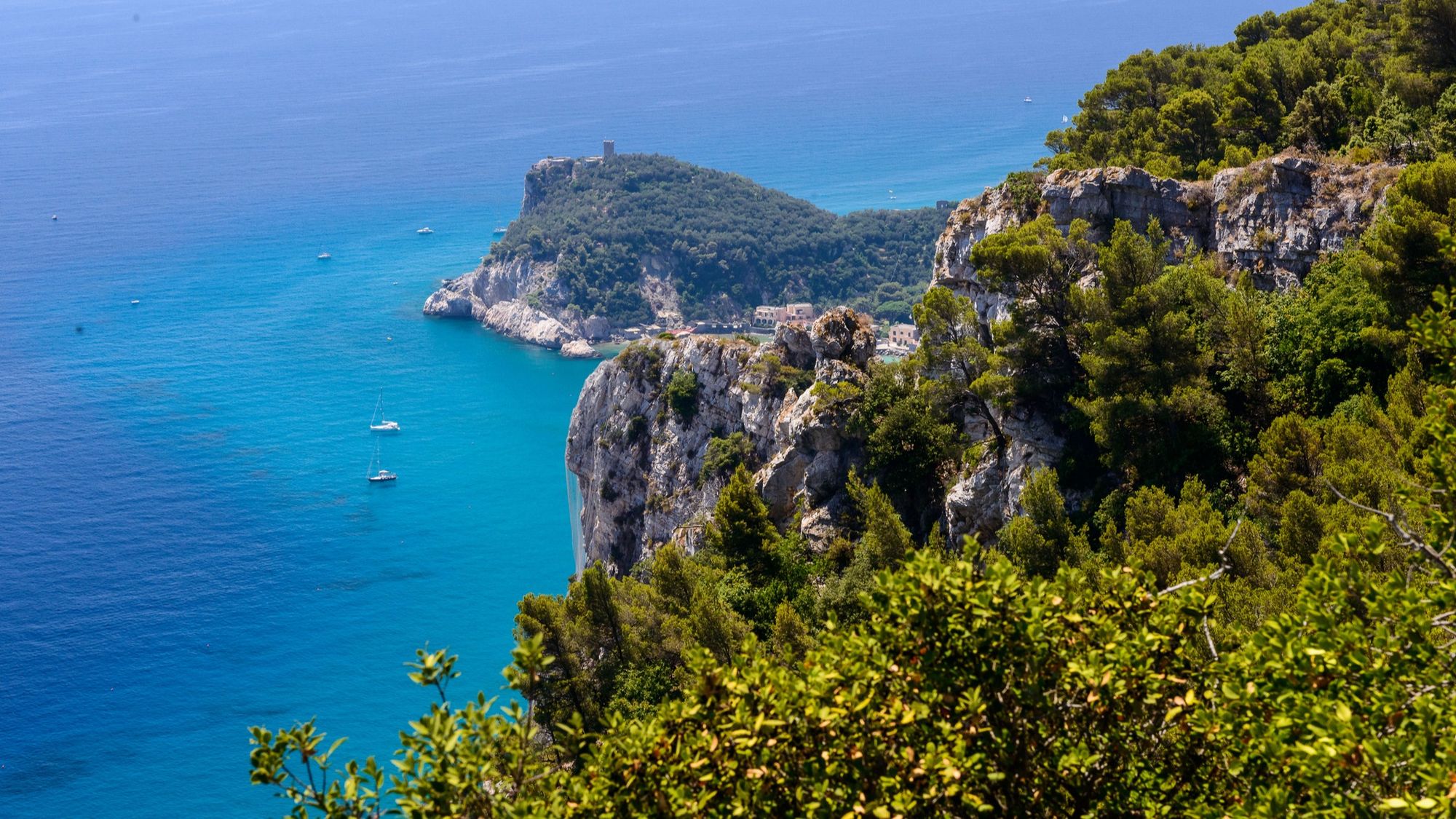
- Season: Spring
- Temperature: 18°C high, 12°C low
- Time zone: GMT+2
- Currency: Euro
- Best for: Delicious Italian cuisine
The Italian Riviera, in Italy’s Liguria region, is an area of coastline famed for its beauty. The eastern half, the Riviera di Levante, is a popular tourist destination thanks to its small turquoise coves and pastel-hued hillside villages, the Cinque Terre. But the western side, Riviera di Ponente, is just as beautiful and much quieter.
Base yourself in the unspoilt coastal town of Finale di Liguria, where you can relax on the beach and explore the piazzas and cobbled alleyways of the old town. Spend your days hiking the region’s trails, such as the Pilgrim’s Path from Varigotti through Mediterranean scrub and maritime pine forest to viewpoints overlooking the ocean. Fuel up after your hikes with traditional Ligurian fare, including basil pesto, mouthwatering pasta dishes, and antipasti such as polpo con patate (octopus with potatoes and olive oil).
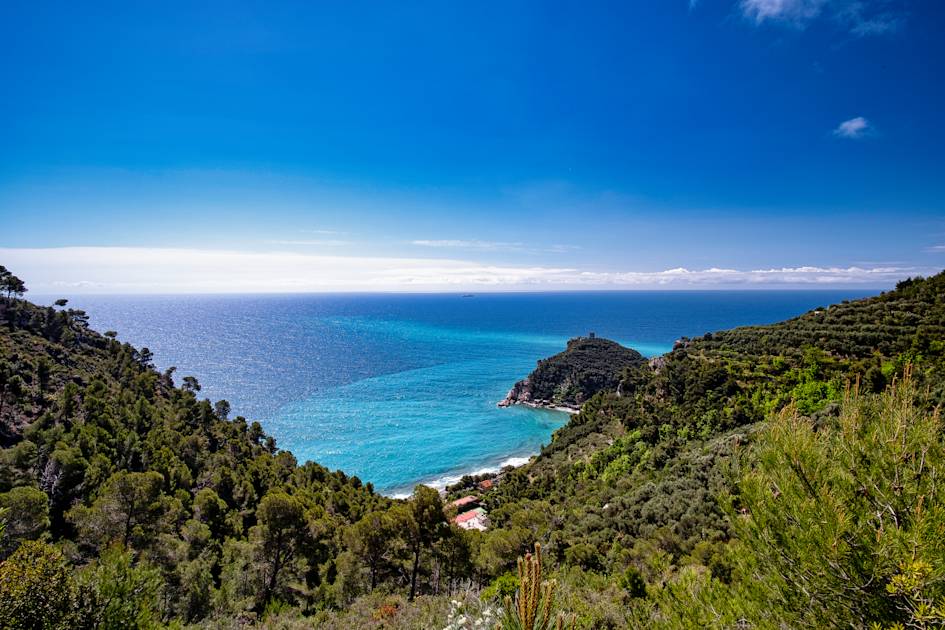
The climate of the Italian Riviera in April is mild, with an average temperature of 15°C, although it gets warmer as the month progresses. This is weather for hiking, rather than sunbathing - a dip in the sea will be bracing!
How to get there? Take the train from Milan Centrale Station to Finale Ligure (2.5-3.5 hours). You can reach Milan by plane or train.
18. Mauritius, Africa
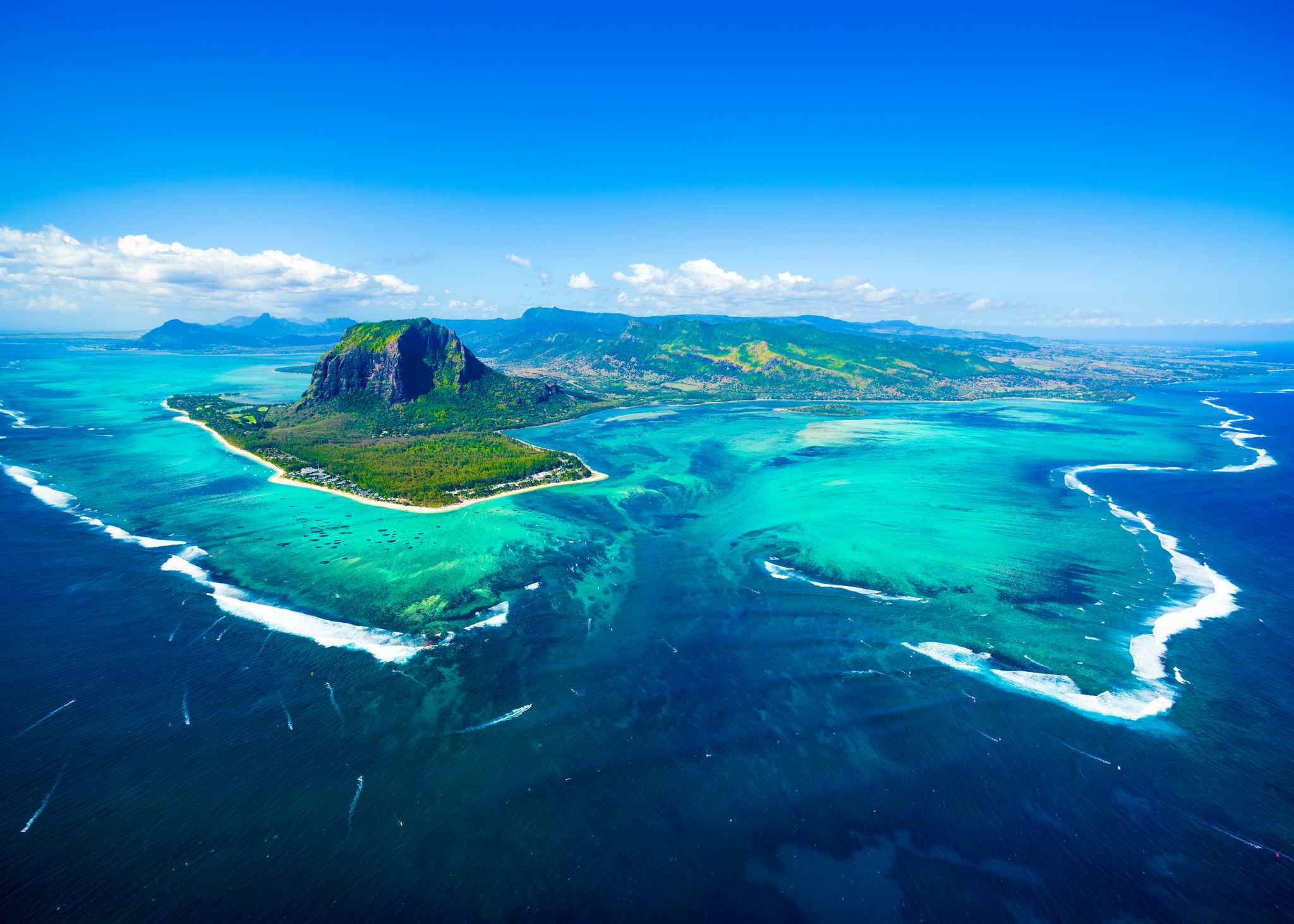
- Season: Dry
- Temperature: 28°C high, 22°C low
- Time zone: GMT+4
- Currency: Mauritian rupee
- Best for: Island exploration
Mauritius is an island in the middle of the Indian Ocean, 500 miles east of Madagascar. With its coral reefs, white sand beaches and volcanic, rainforest carpeted interior, it has a lot to offer adventure travellers. Hike Le Morne Brabant, a basalt monolith and UNESCO World Heritage Site that once sheltered escaped slaves - you’ll have fantastic views over the island from the top. Canyon down Tamarin Falls, or try your hand at surfing on one of the beaches.
Head even more off the beaten track to hike the Black River Gorges National Park, where dense forest gives way to pounding waterfalls and mountain vistas. Or head to Amber Island Nature Reserve, where you can sea kayak or snorkel the crystalline waters surrounding it.
April is the beginning of the dry season in Mauritius - although there’ll still be a few showers, these tail off as the month progresses. The temperature averages a pleasant 25°C, making it a good time for exploring and watersports.
How to get there? Fly into Sir Seewoosagur Ramgoolam International Airport, 29.8 miles (48km) southeast of the capital, Port Louis.
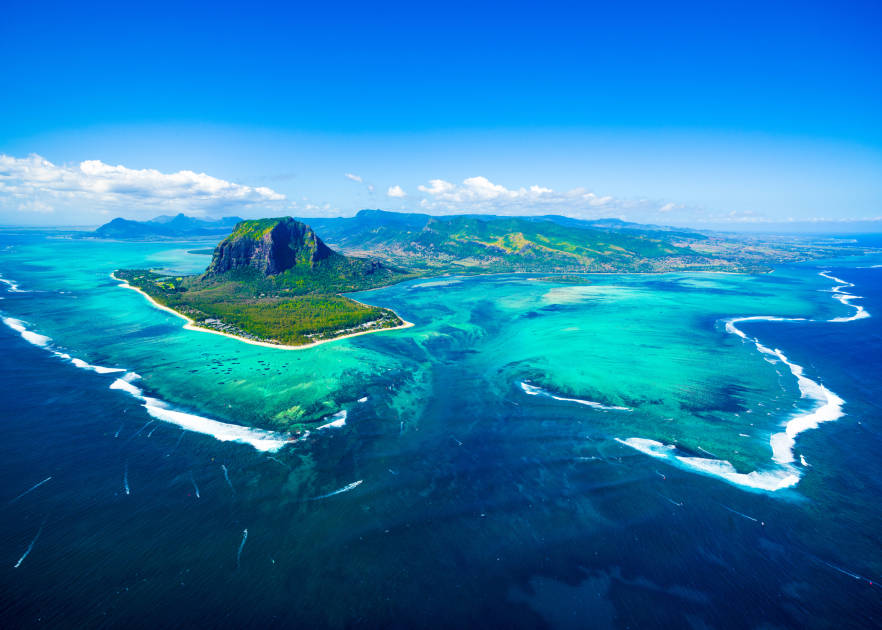
19. Svalbard, Norway
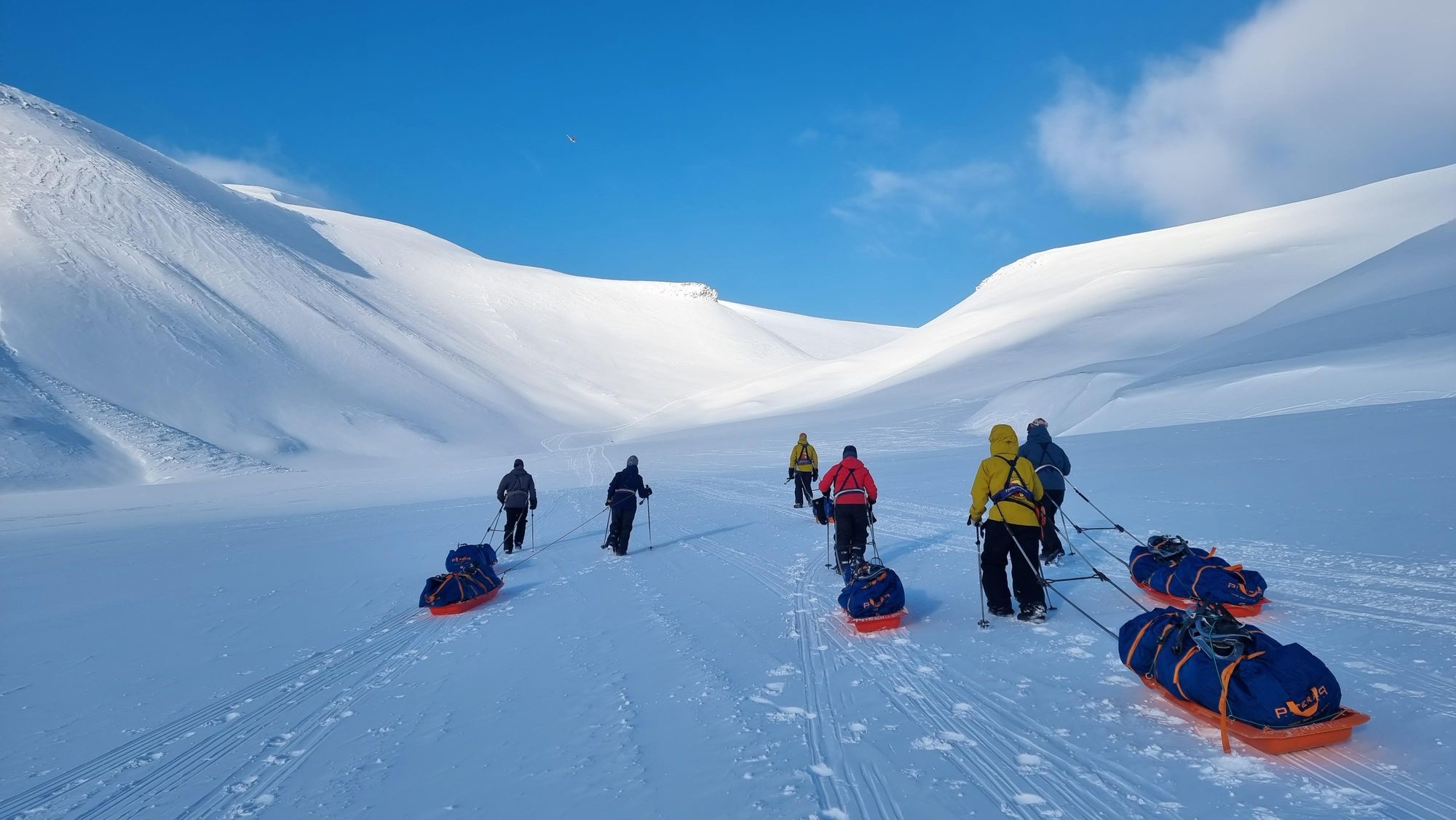
- Season: Spring
- Temperature: -6°C high, -12°C low
- Time zone: GMT+2
- Currency: Euro
- Best for: Arctic adventures
While most of Europe is beginning to warm up, Svalbard, a small Norwegian archipelago in the Arctic Circle, is still blanketed by snow. Have a winter adventure hiking in the snow-carpeted mountains, and exploring labyrinthine ice caves hidden underneath glaciers. If you’re feeling adventurous you can even head off on a winter camping trip, carrying everything you need on a pulka - a small shed. You’ll need a guide for any activities in Svalbard, to protect you against the possibility of polar bear encounters.
April is a good time to visit Svalbard - the 24 hour darkness of winter has disappeared, and you’ll experience some beautiful sunsets and sunrises on your trip. There’s still a chance of seeing the northern lights, too. The temperature averages -8°C, so you’ll need to wrap up warm.
How to get there? Fly into the airport at Longyearbyen, the world’s northernmost city.
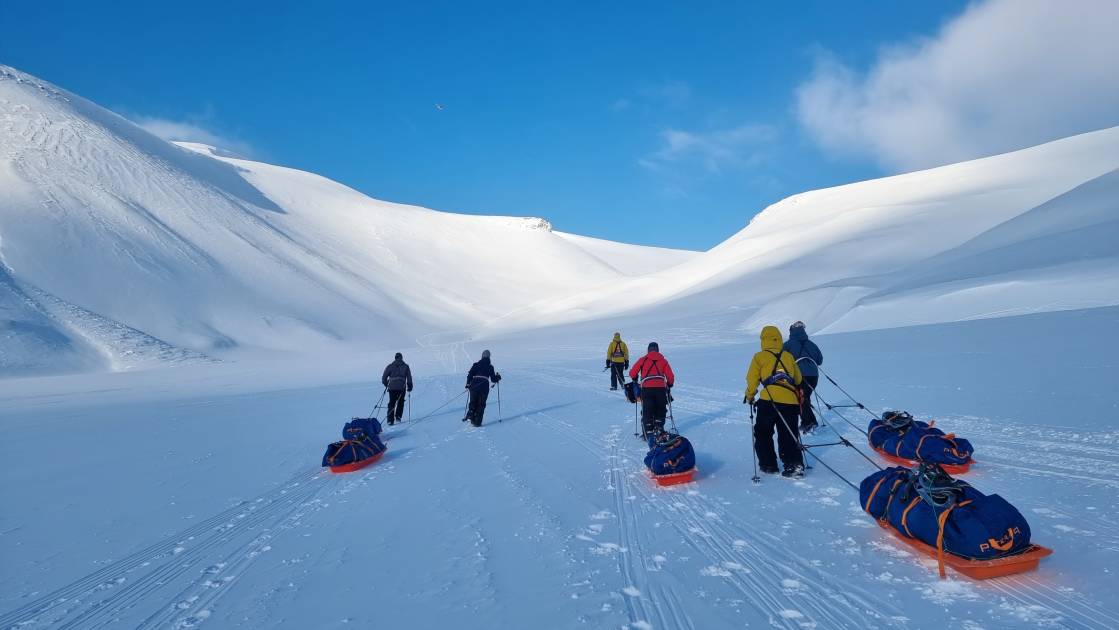
20. The Camino de Costa Rica, Costa Rica
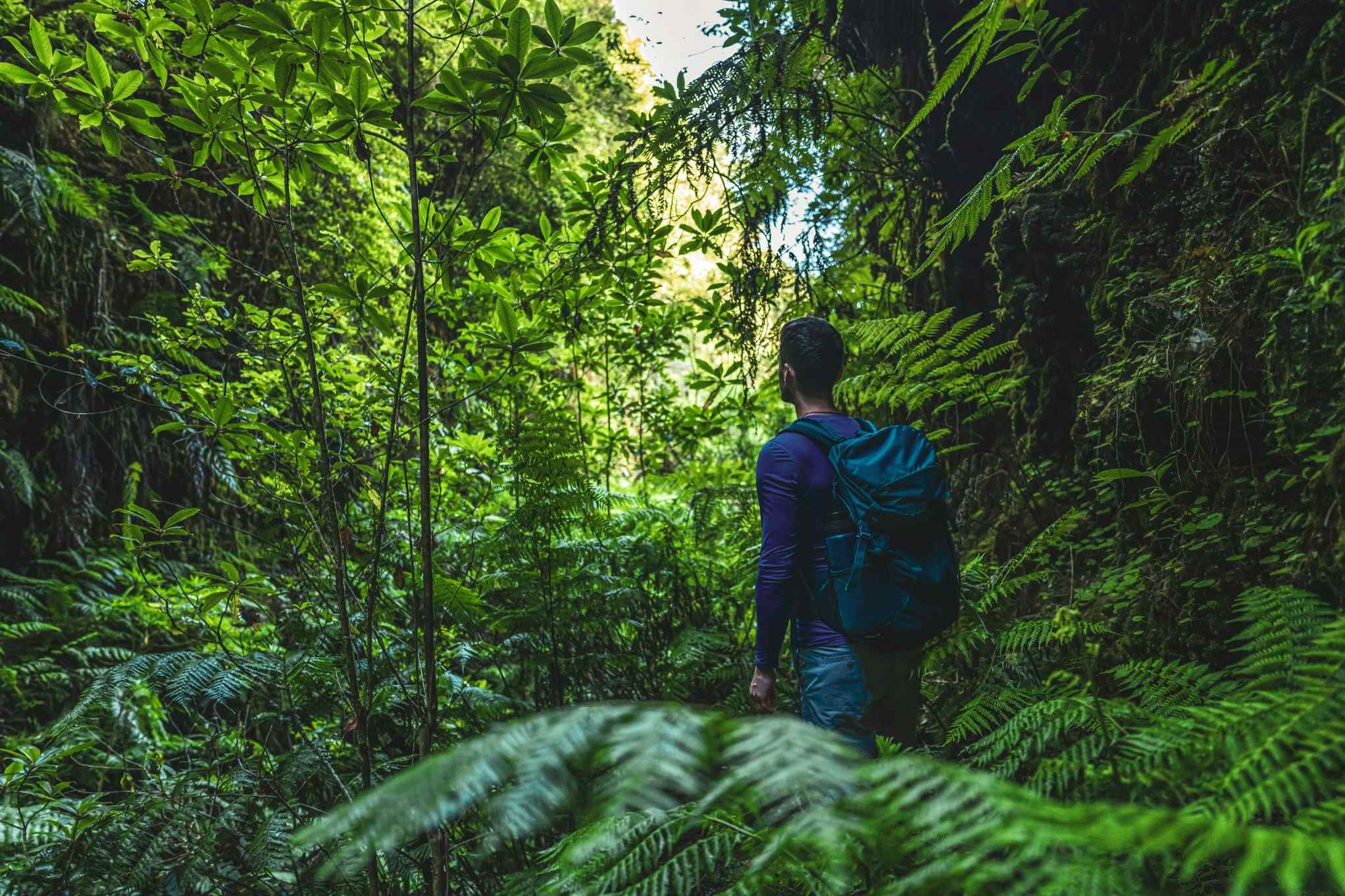
- Season: Shoulder
- Temperature: 35°C high, 22°C low
- Time zone: GMT-6
- Currency: Costa Rican Colón
- Best for: A coast to coast hike with a difference
The Camino de Costa Rica is a new hiking trail running 174 miles (280km) coast to coast across Costa Rica. Starting on the Caribbean coast in Barra de Parismina, the trail runs inland through the mountains before heading down through the jungle towards the Pacific Coast.
"We wanted it to be as beautiful and as varied as possible," says Conchita Espino, one of the co-creators of the trail. “At the two edges of the coast, the Pacific and Atlantic, it’s very flat. The gravel roads near the Atlantic are lined with beautiful fields of pineapples and bananas. It’s humid and hot and you see the mountains in the distance. On the Pacific side it’s pine and oil palms, and it’s not as hot. In the centre of the country, you have mountainous areas with varied vegetation and cool air.”

April is the transition between wet and dry season in Costa Rica. This means that temperatures are hot, averaging around 28°C in the lowlands, and a few degrees cooler as you ascend to the mountains. The intermittent rainfall is refreshing, and dips in waterfalls and rivers will also help cool you down as you hike.
How to get there? Fly into Juan Santamaría International Airport, near the capital of San José.
Inspired? Check out our adventures across the world departing in April.


